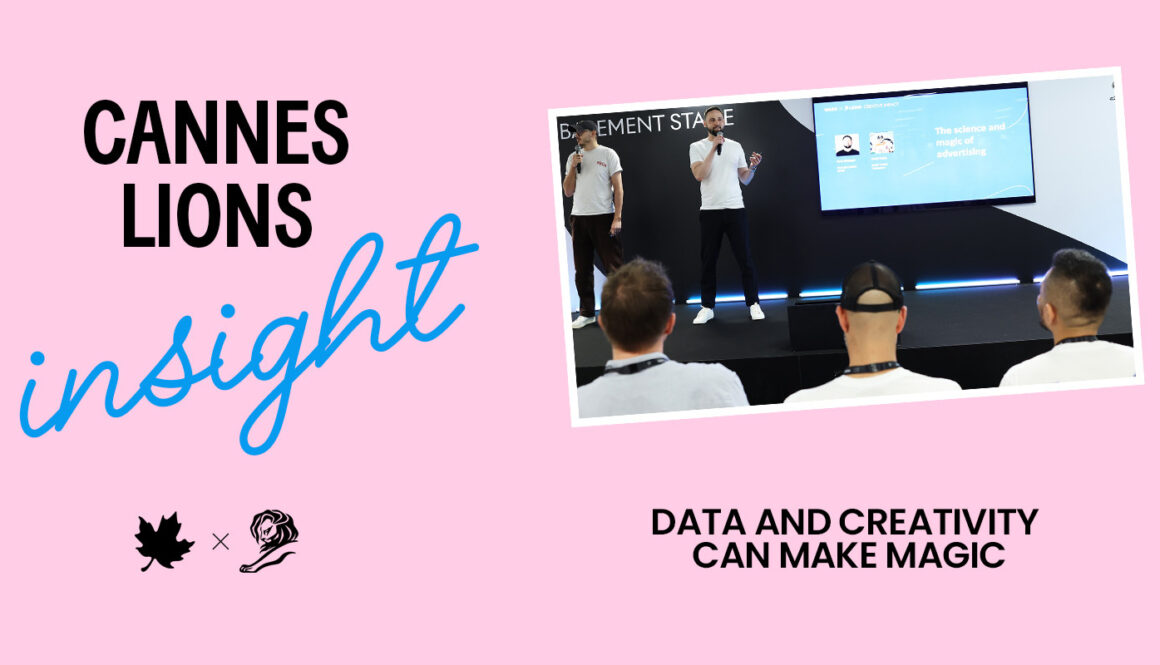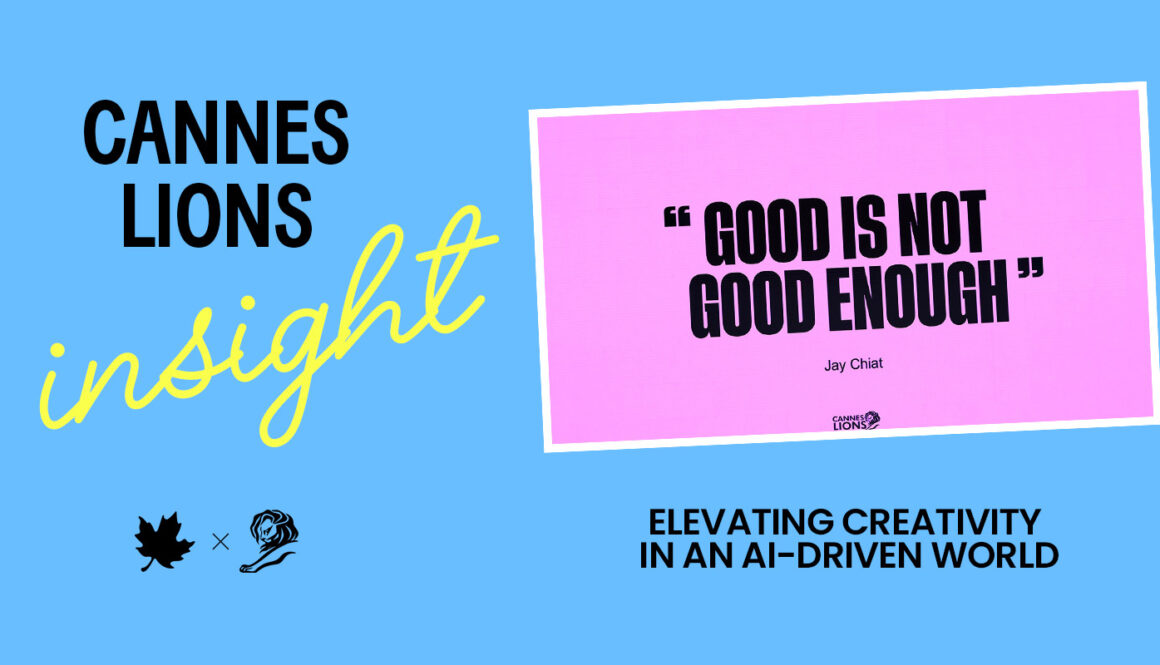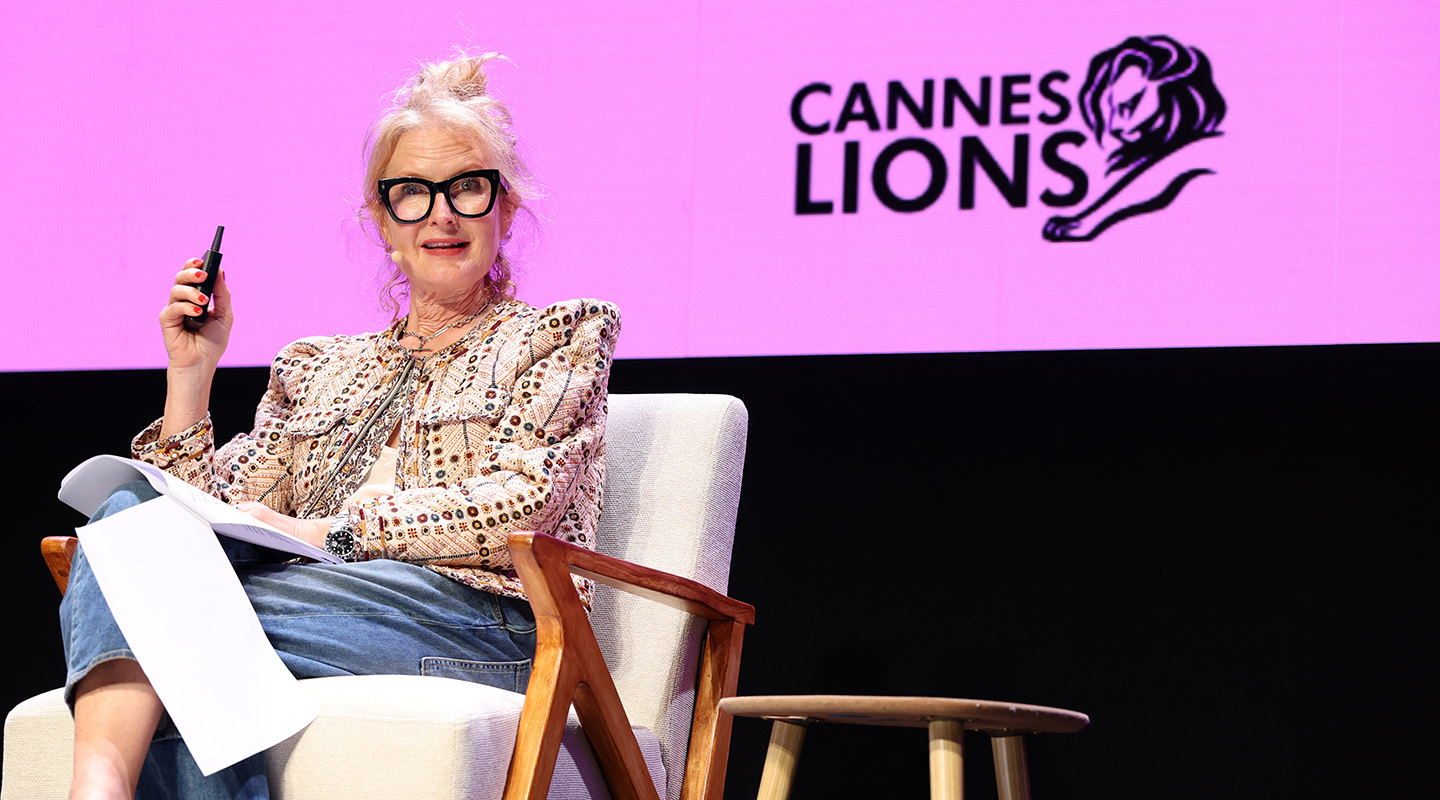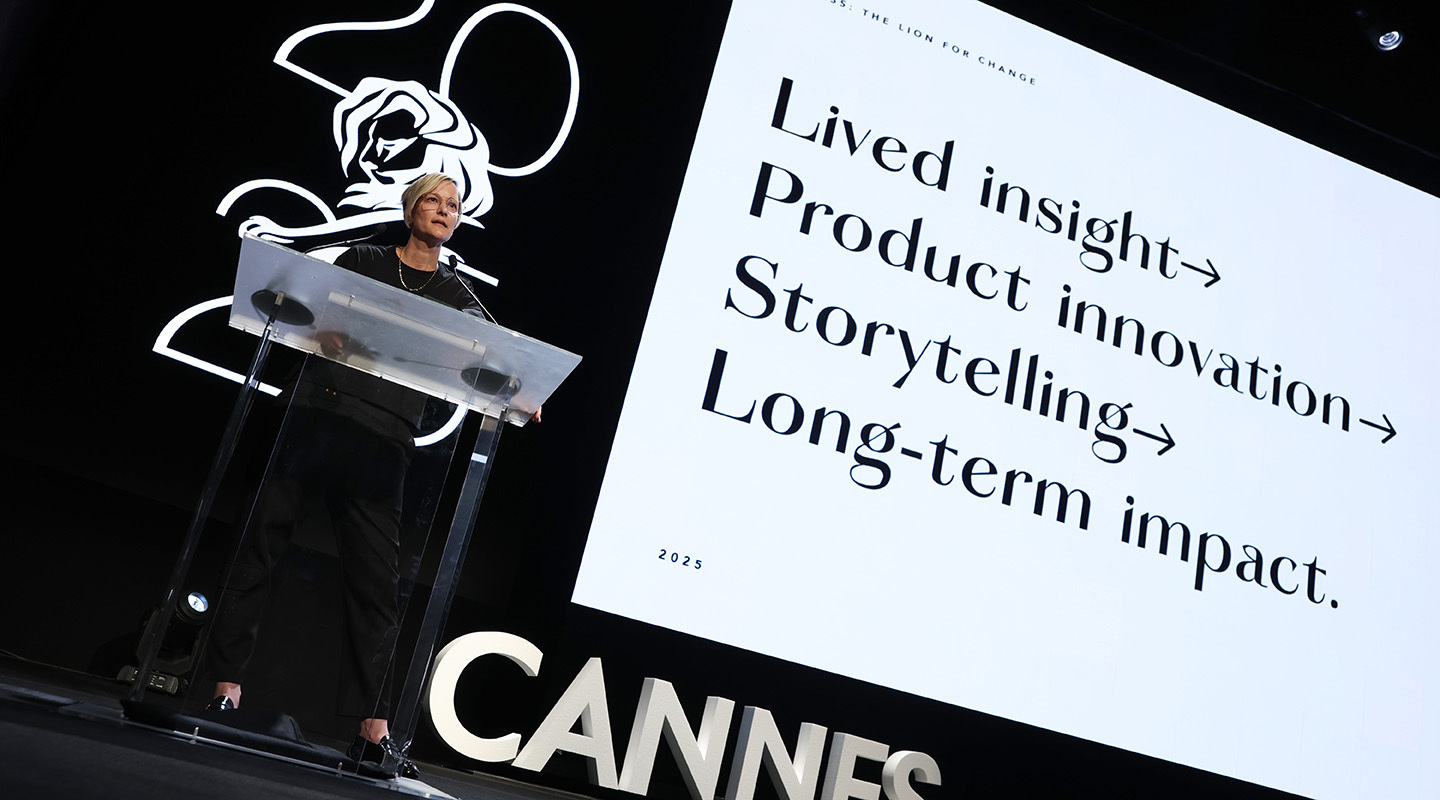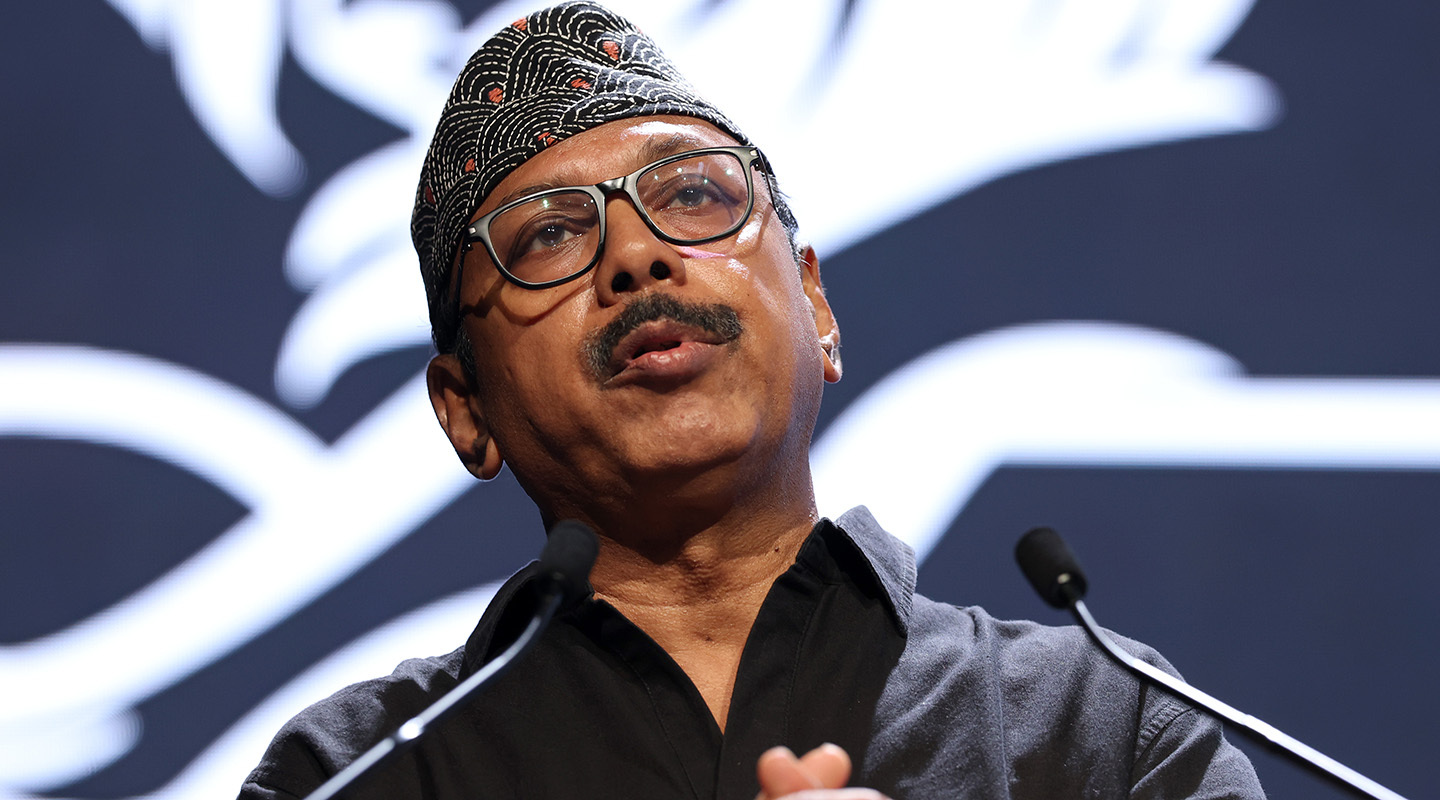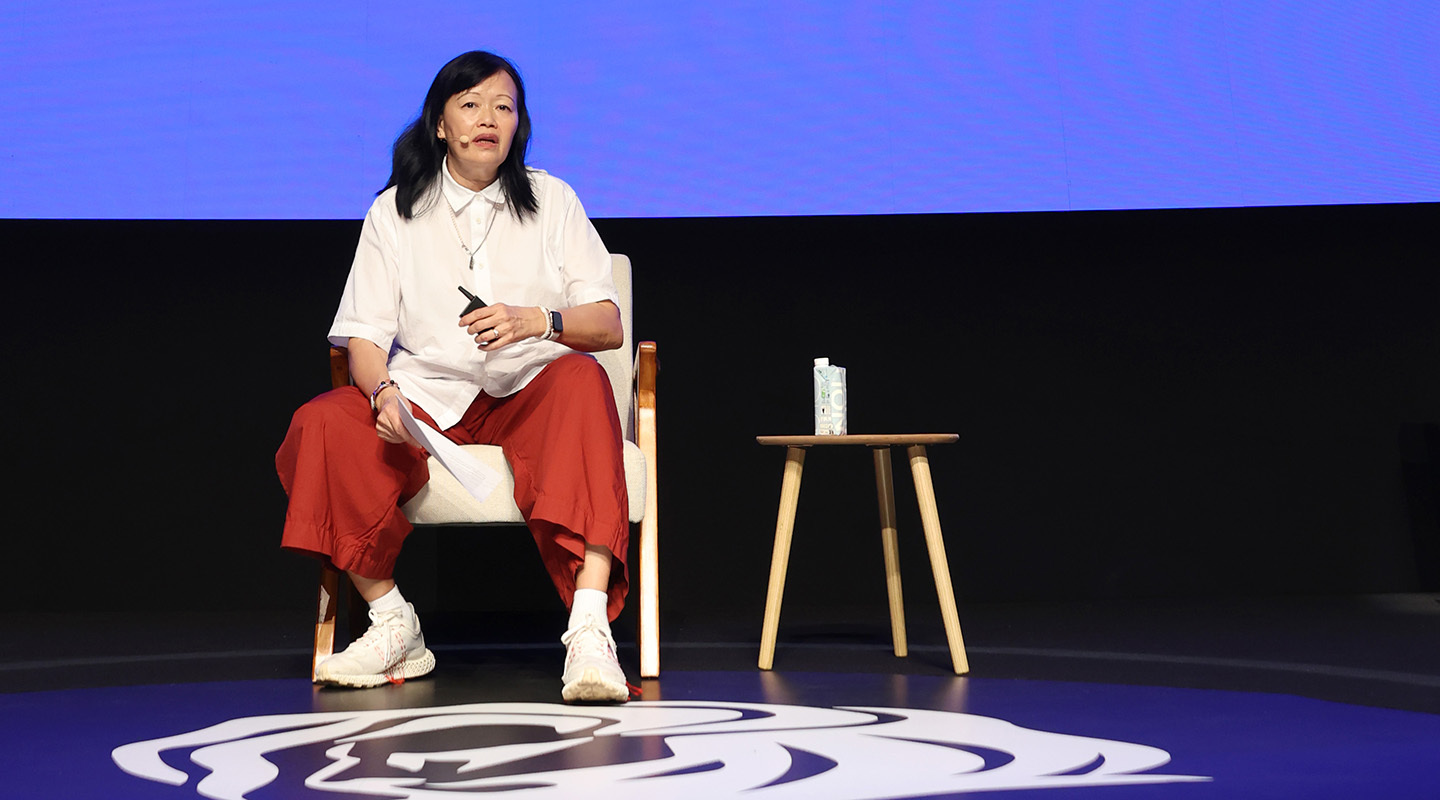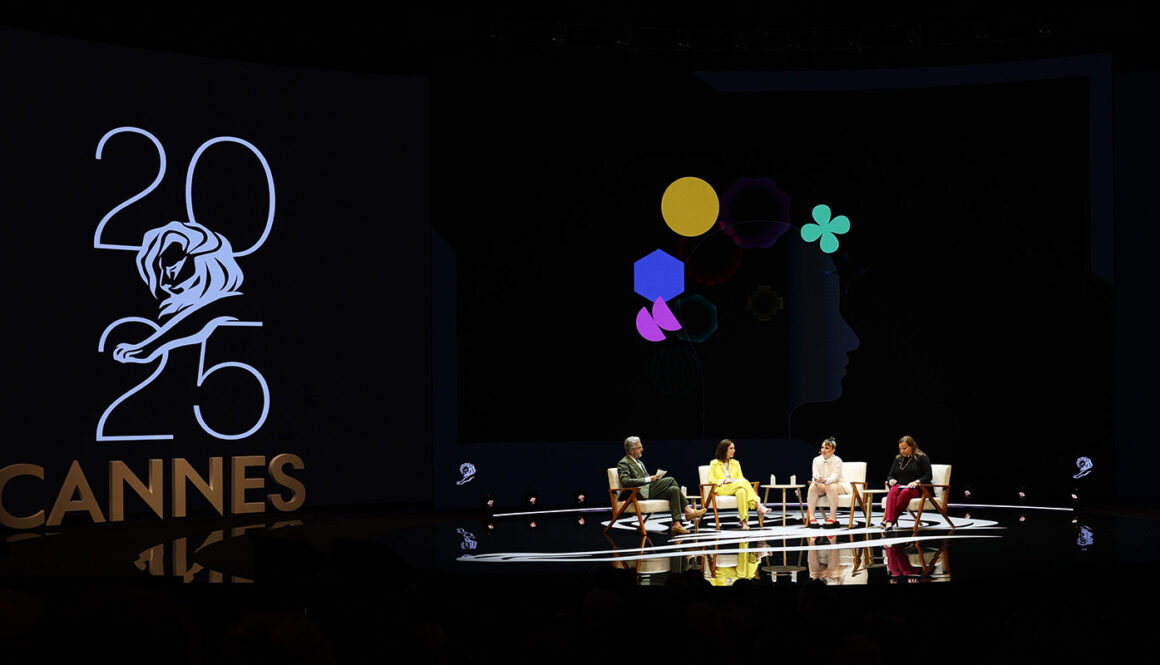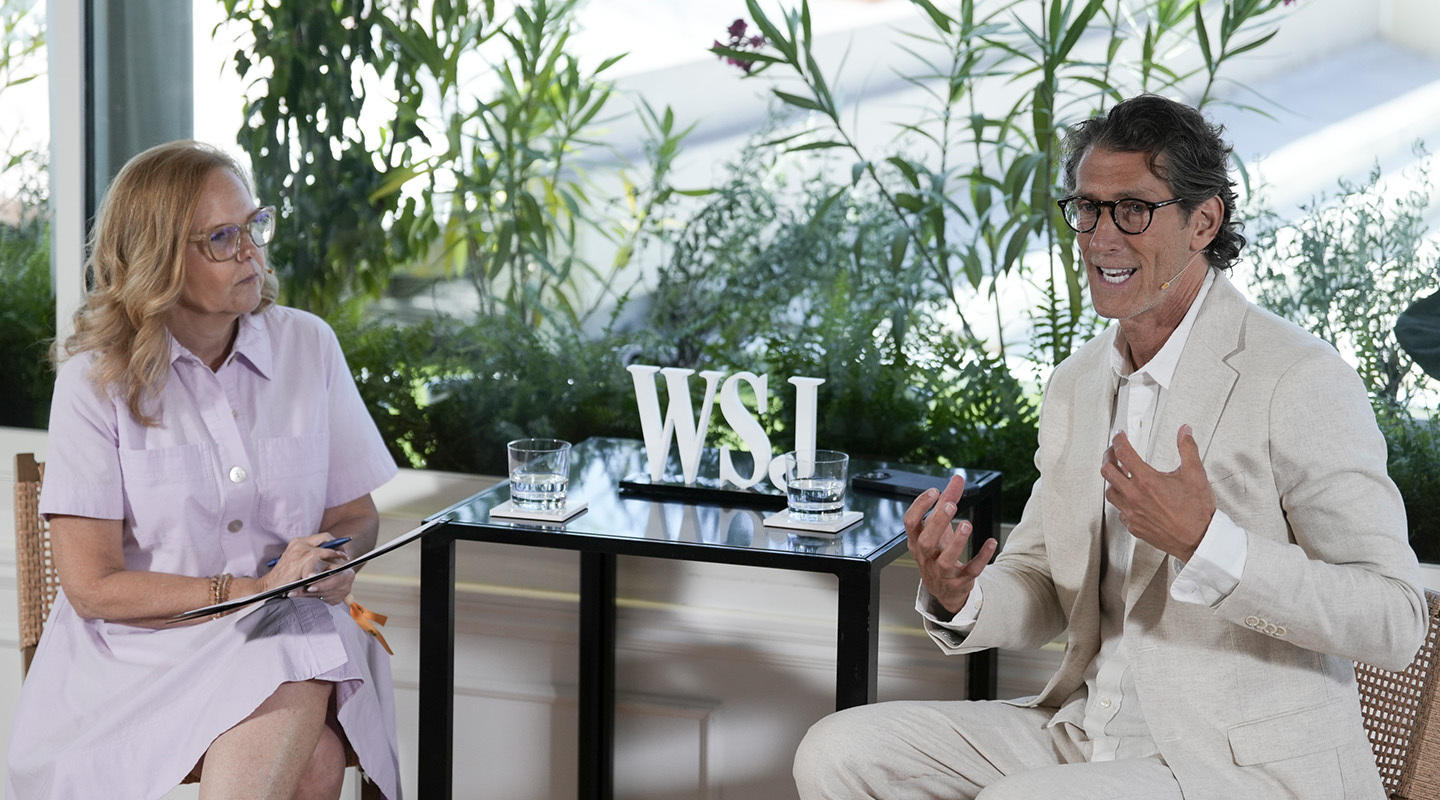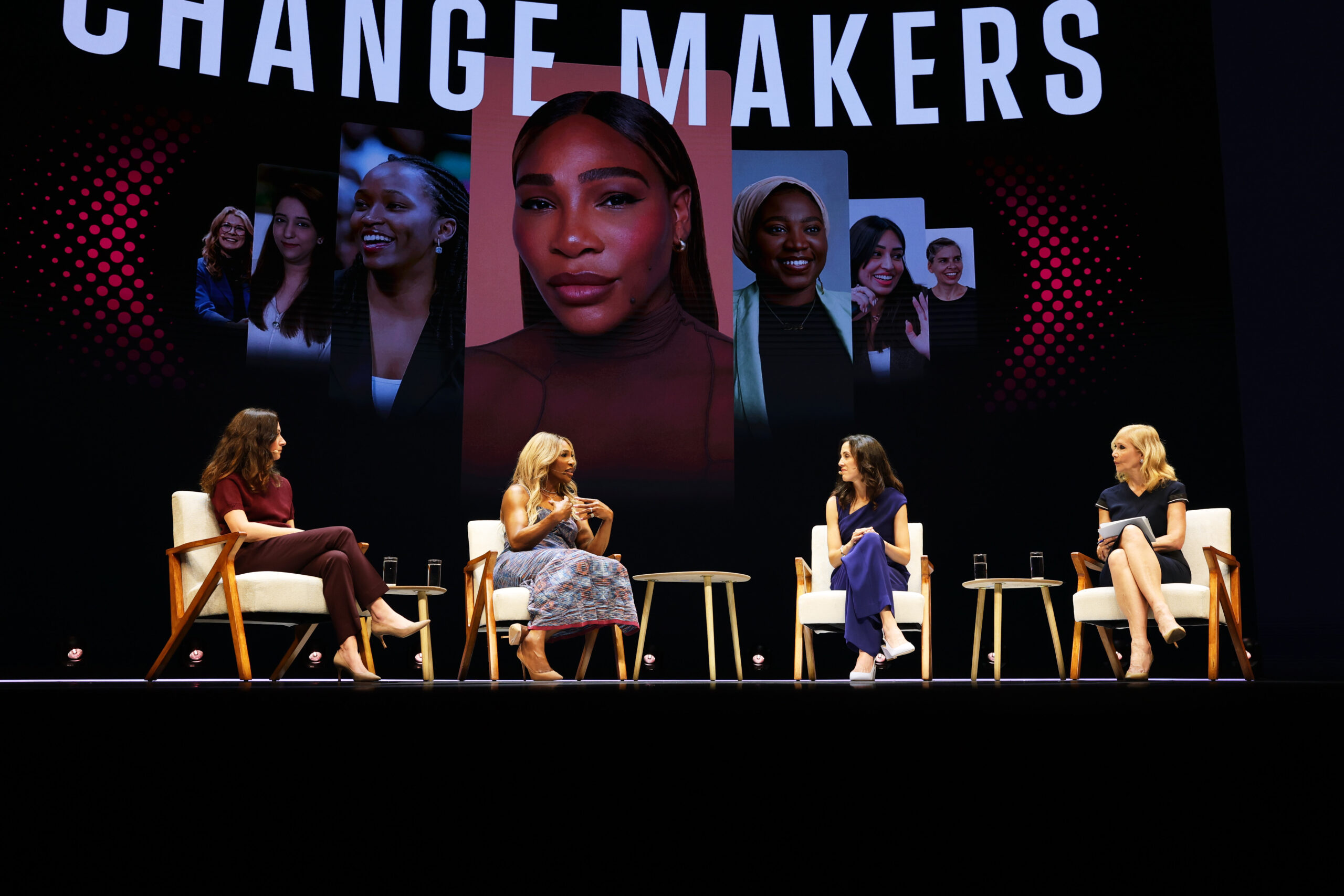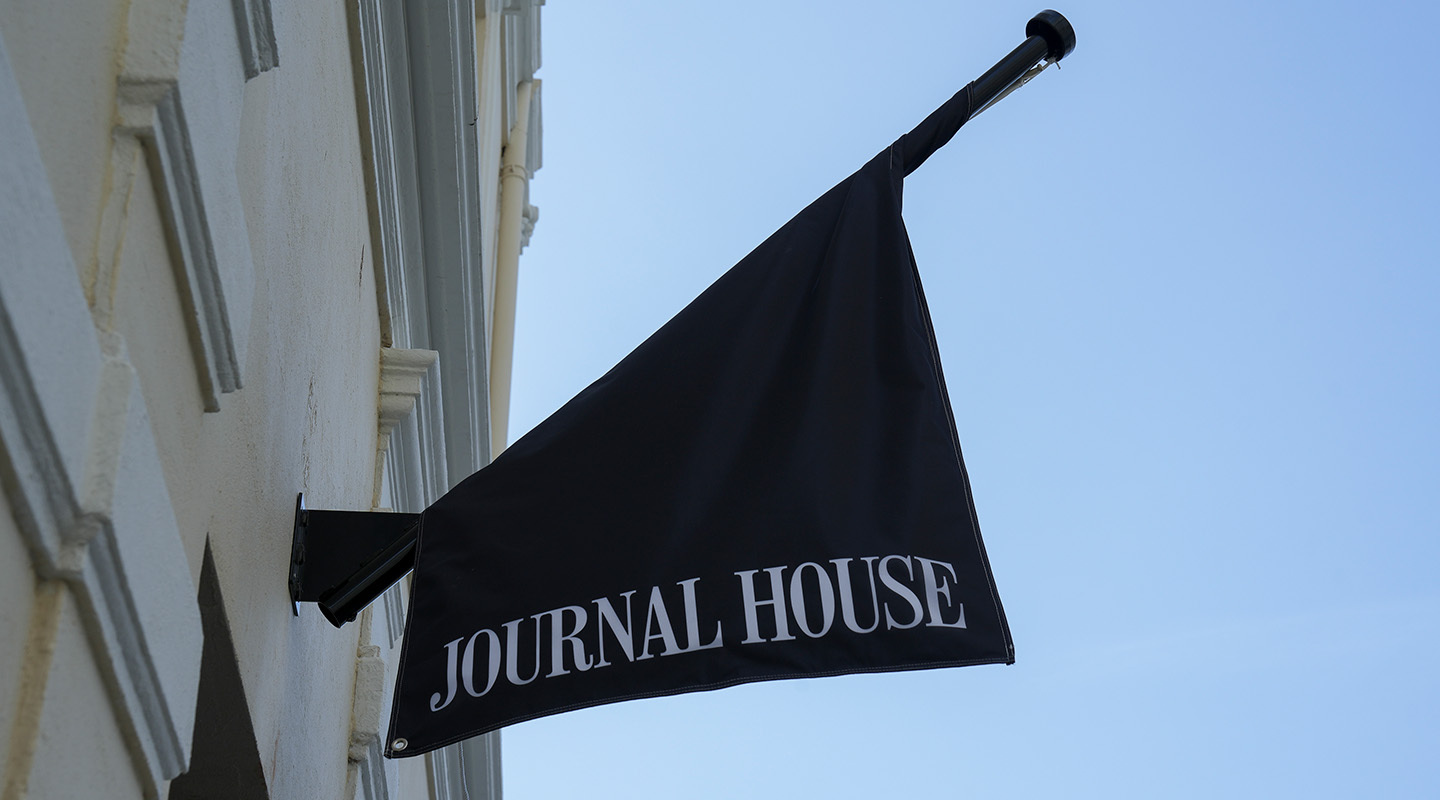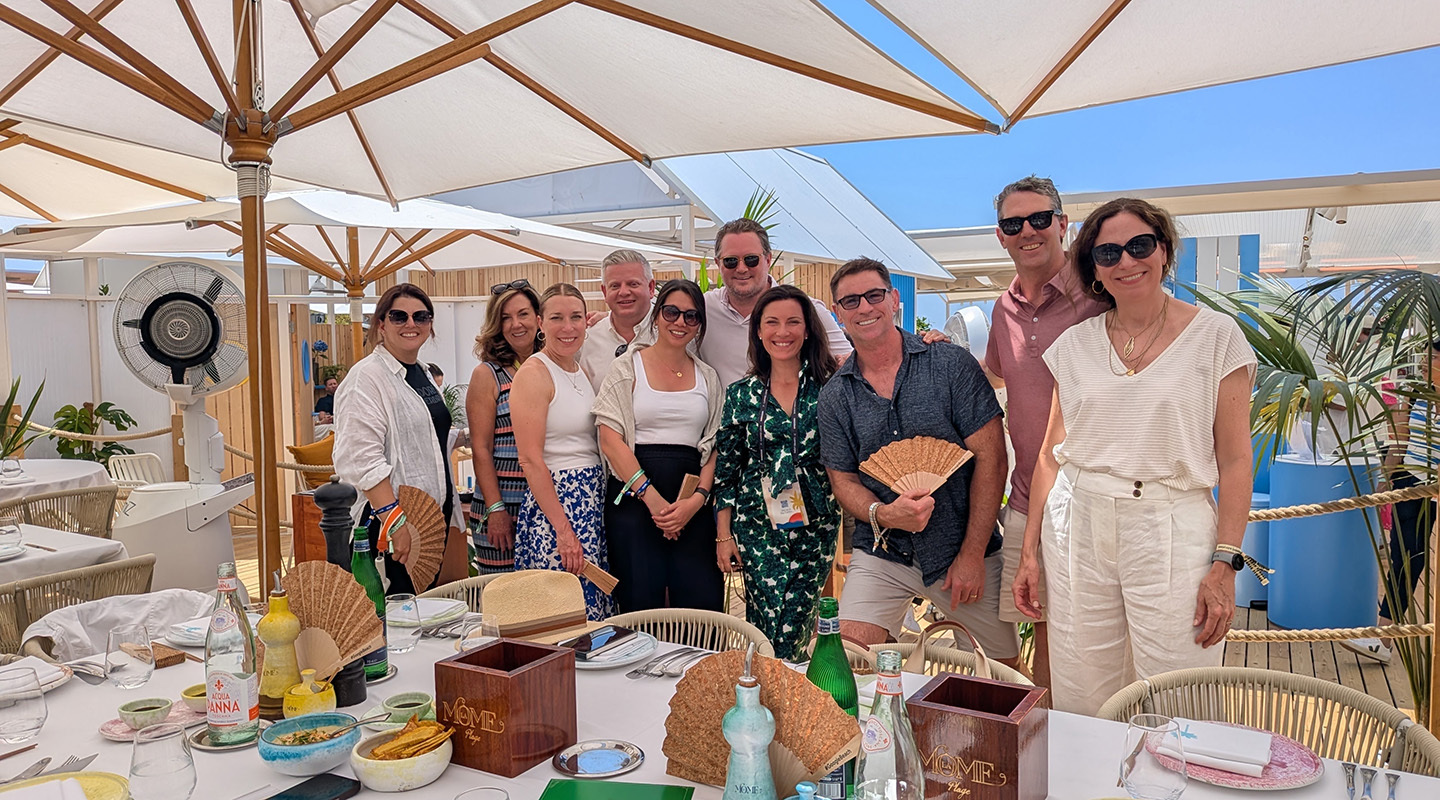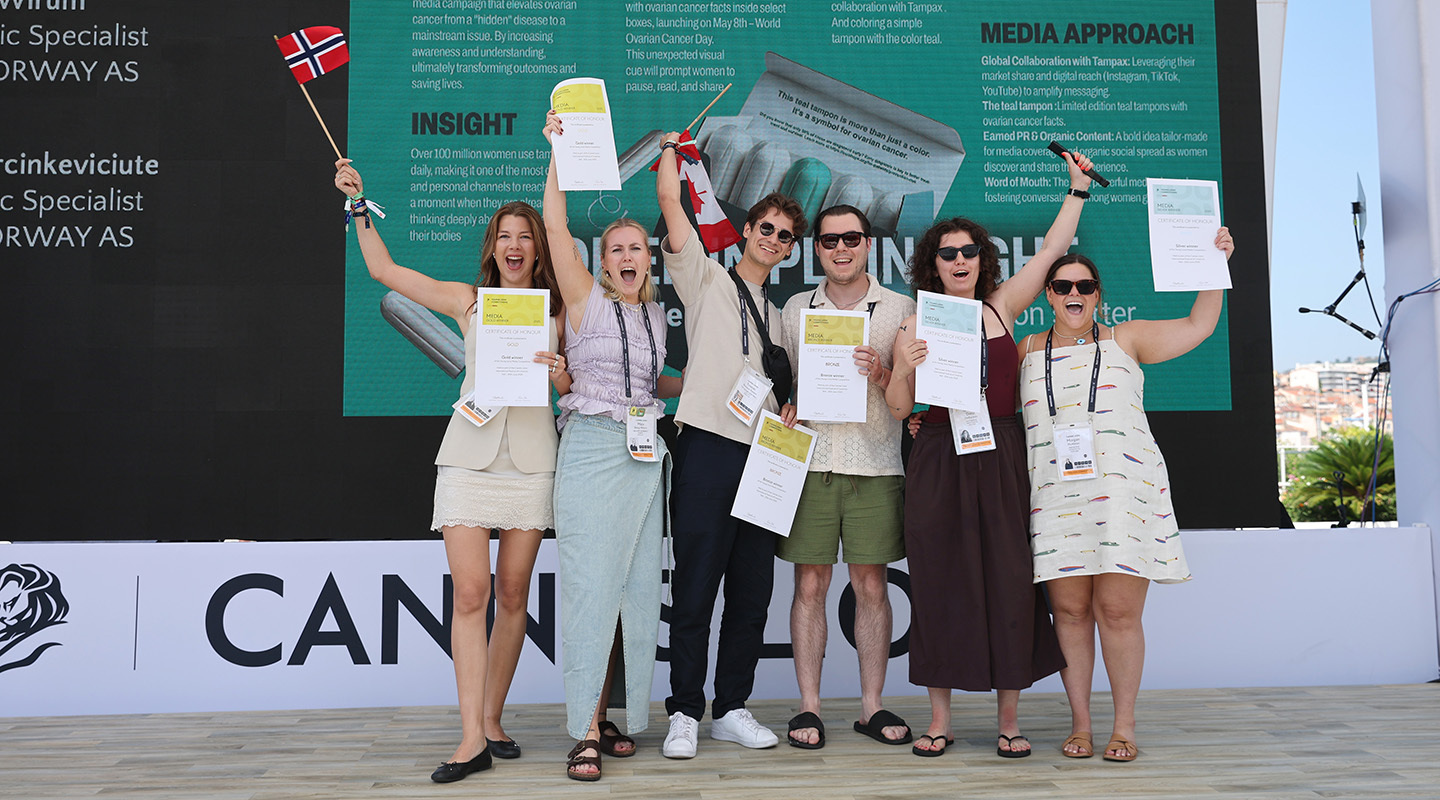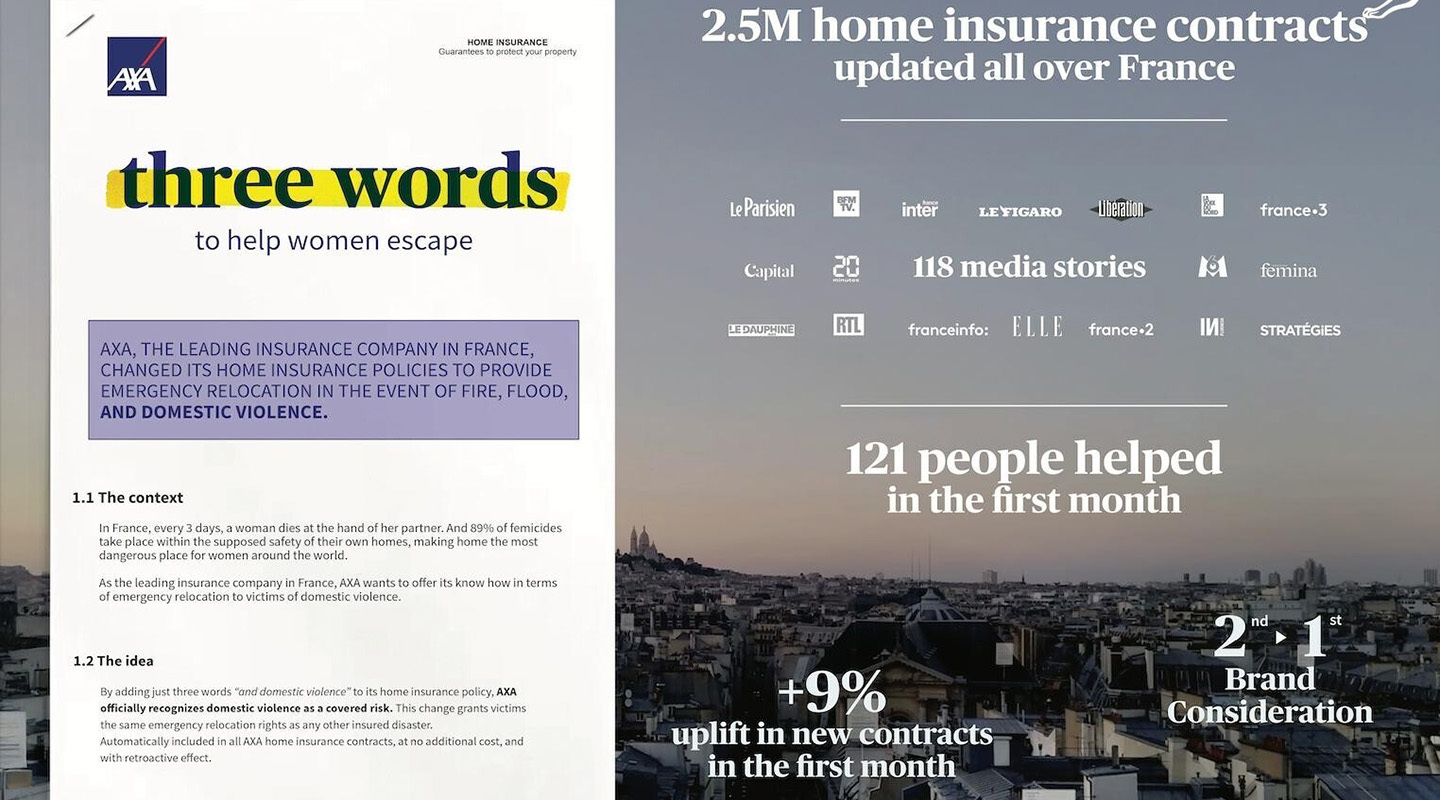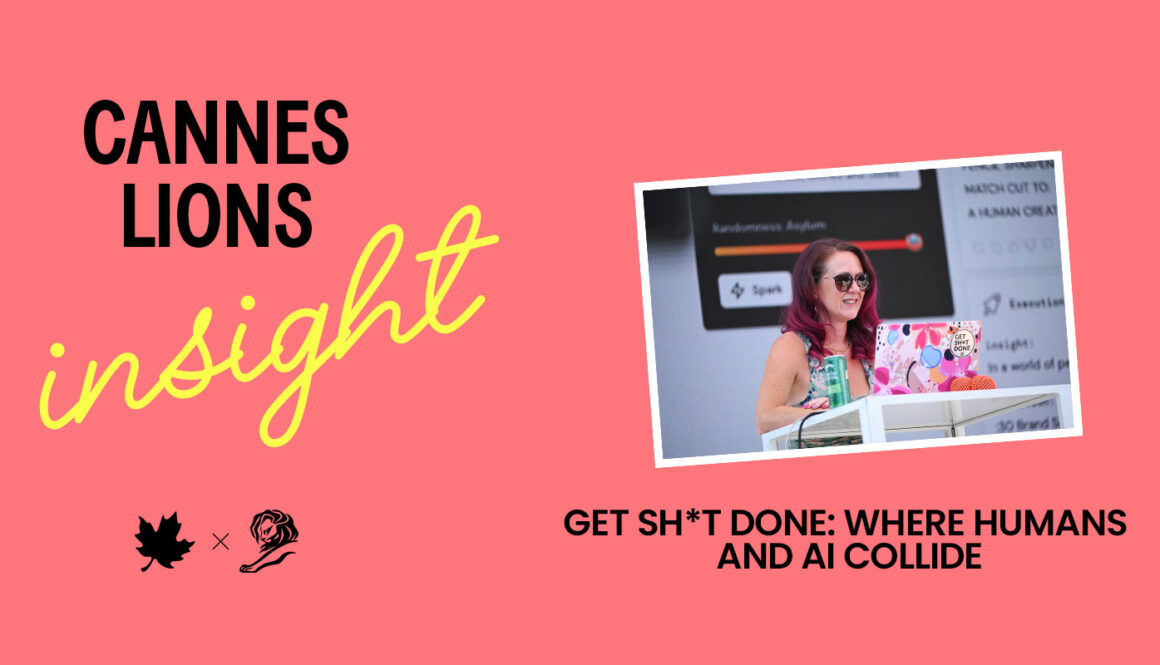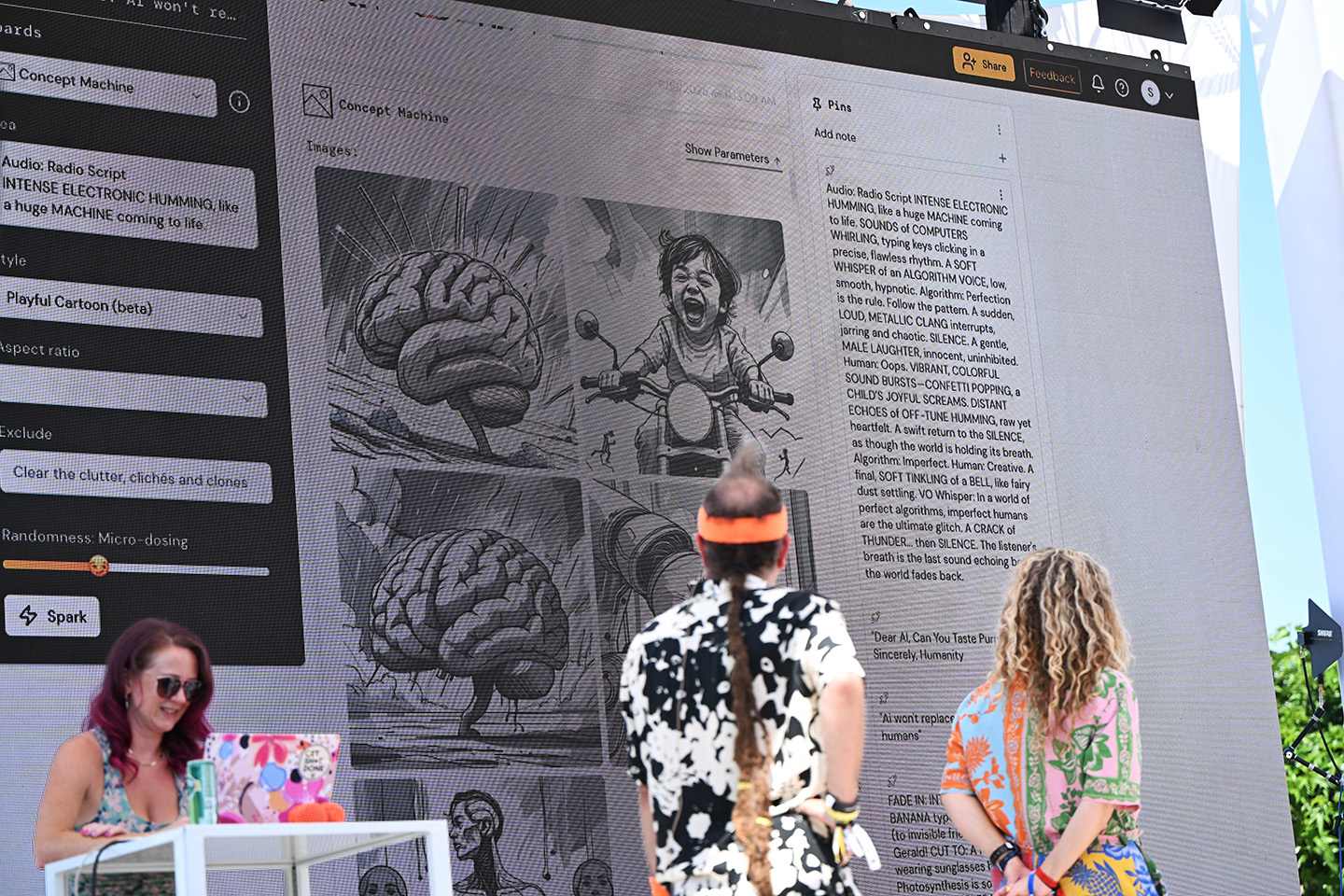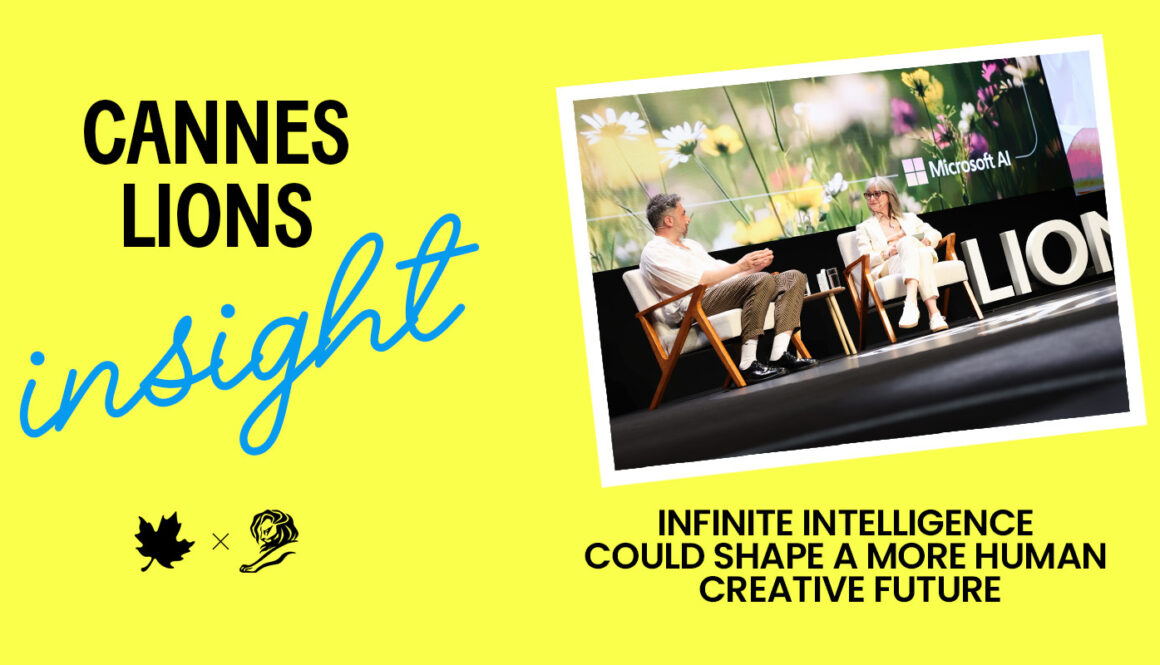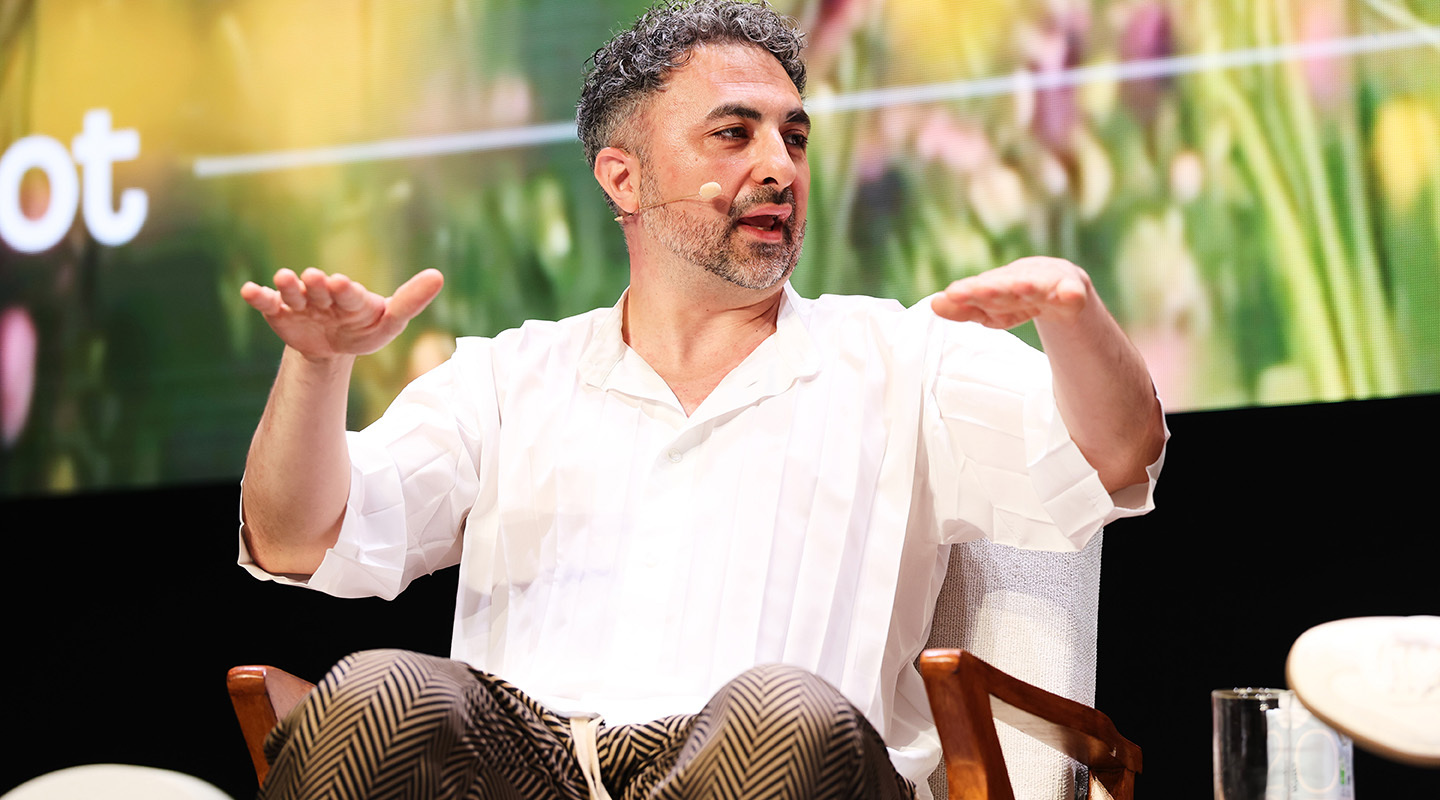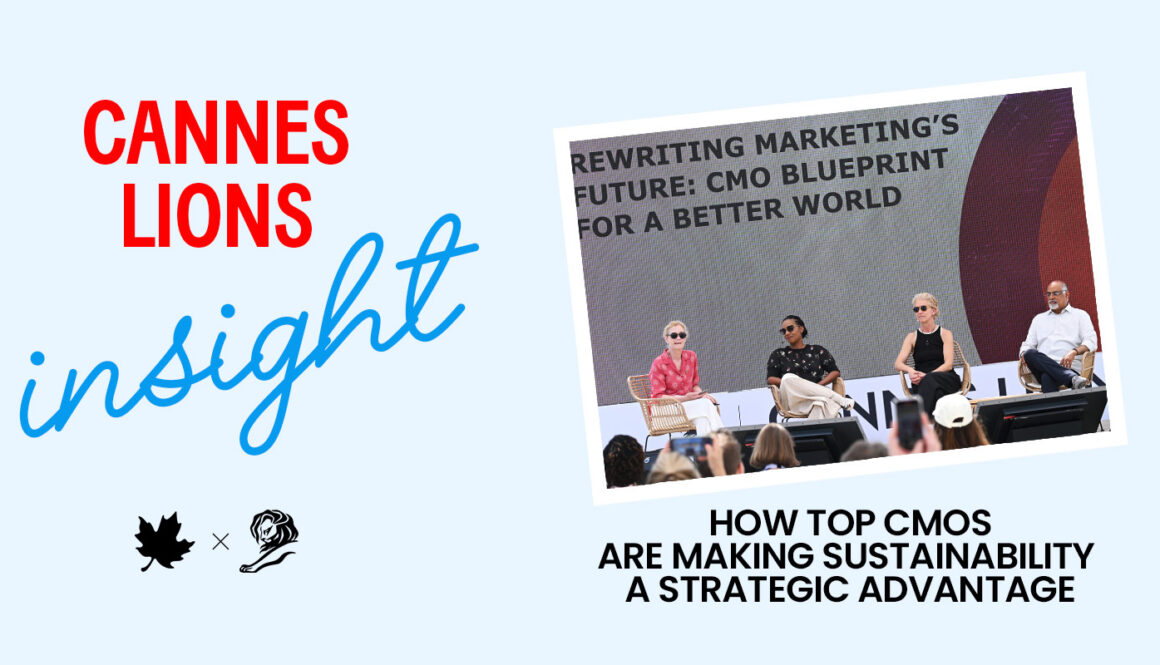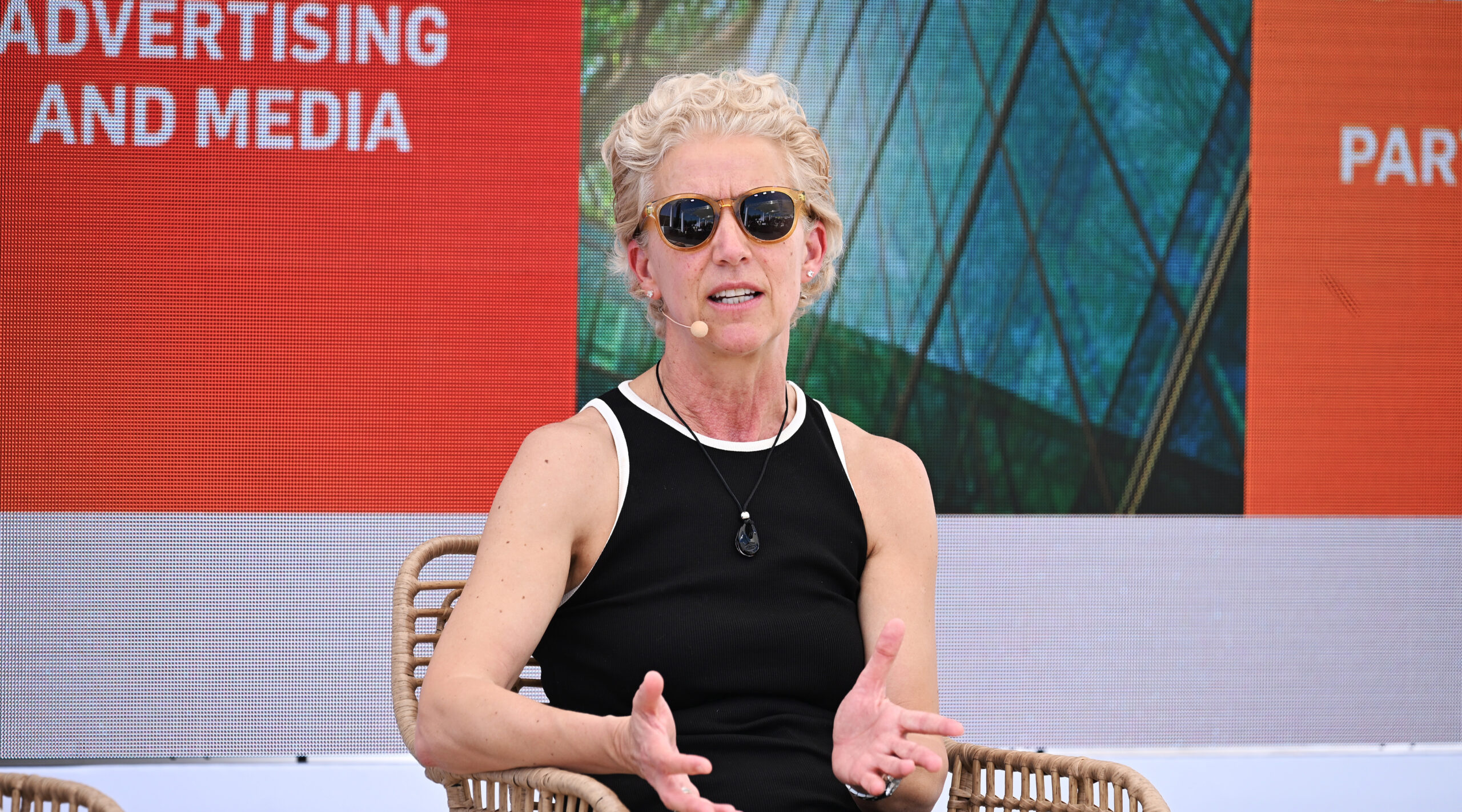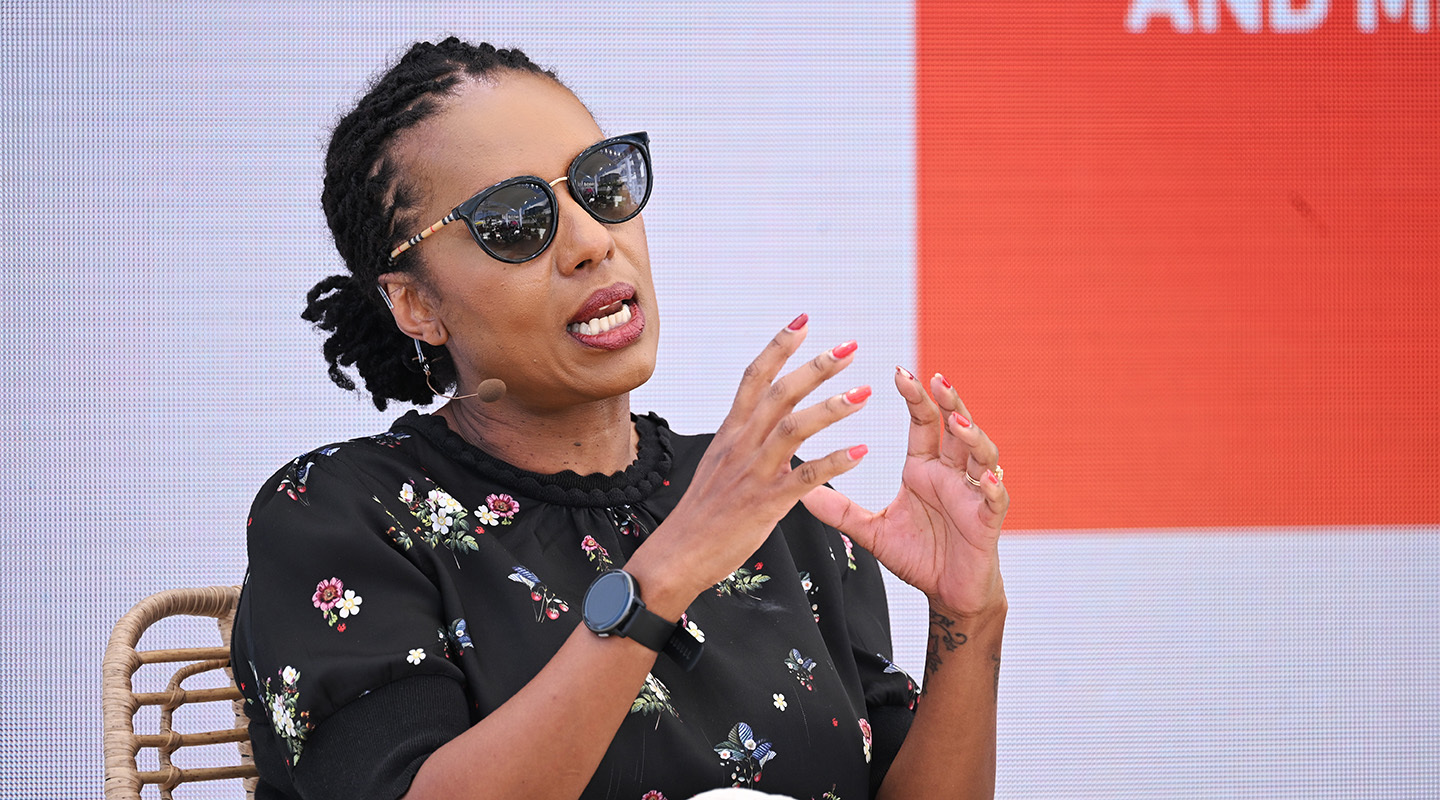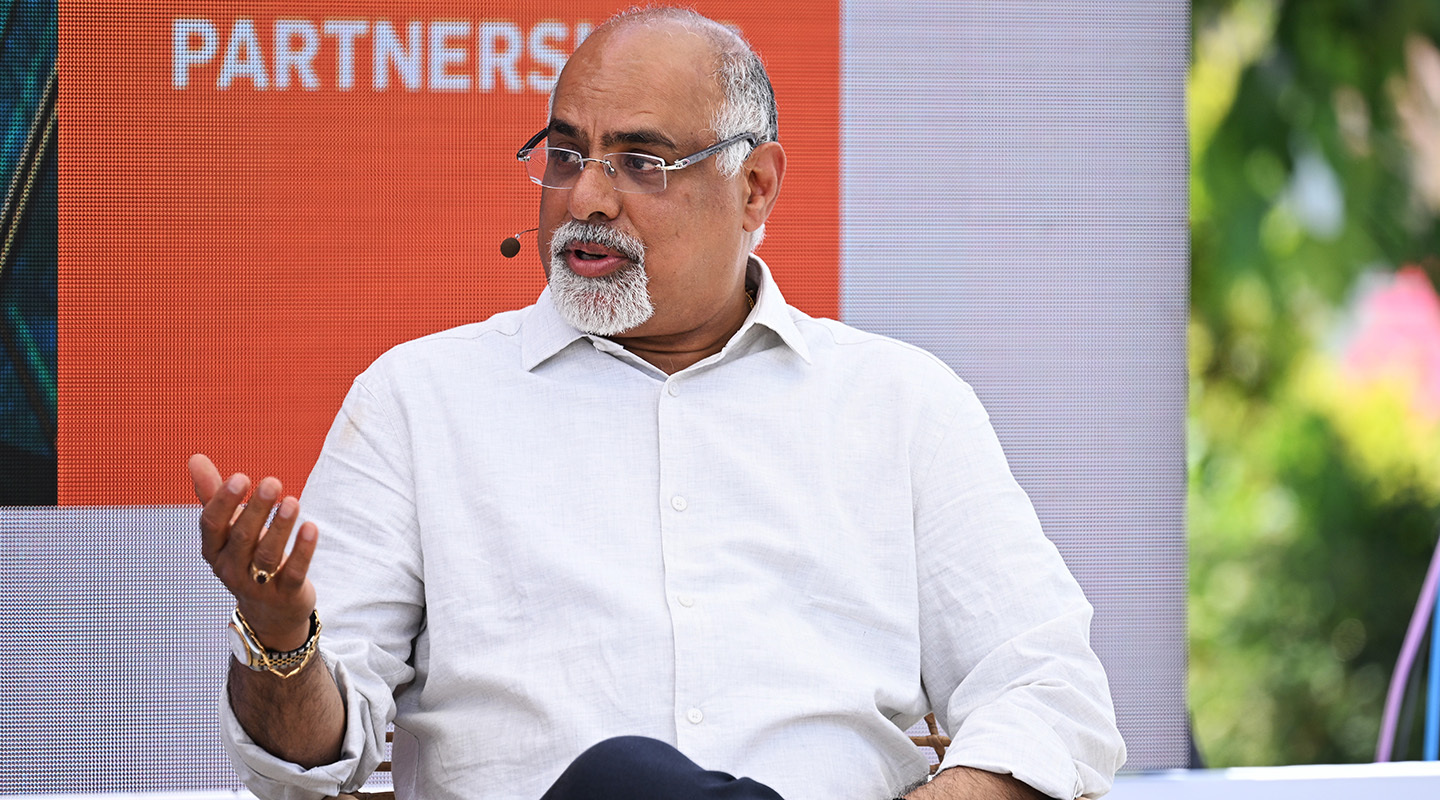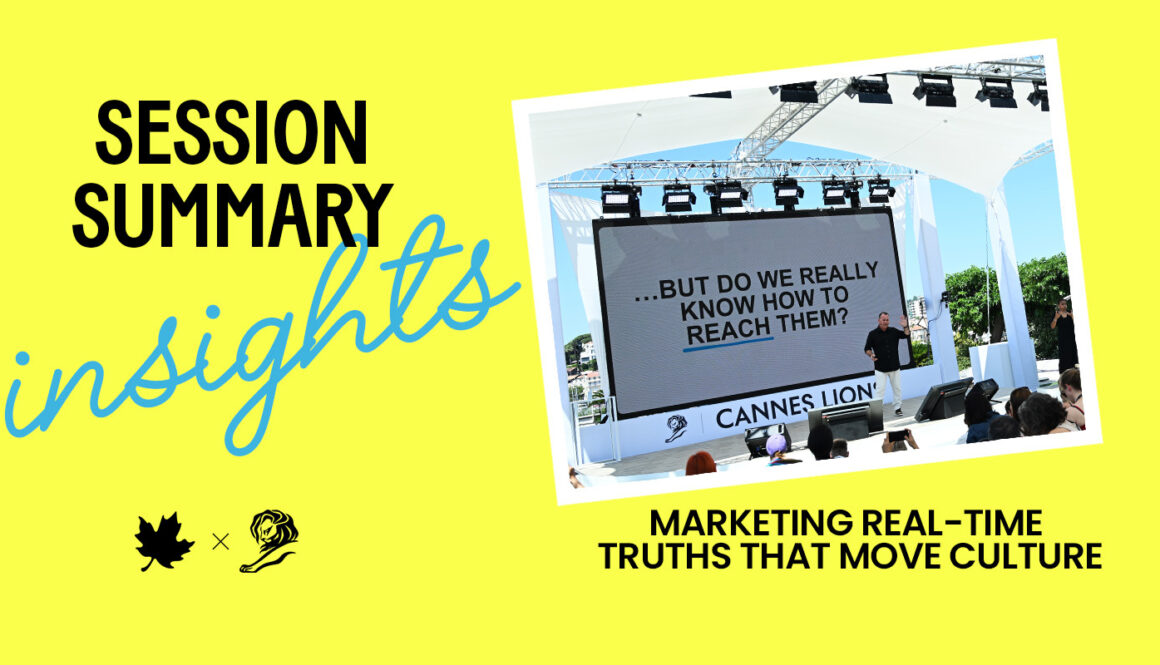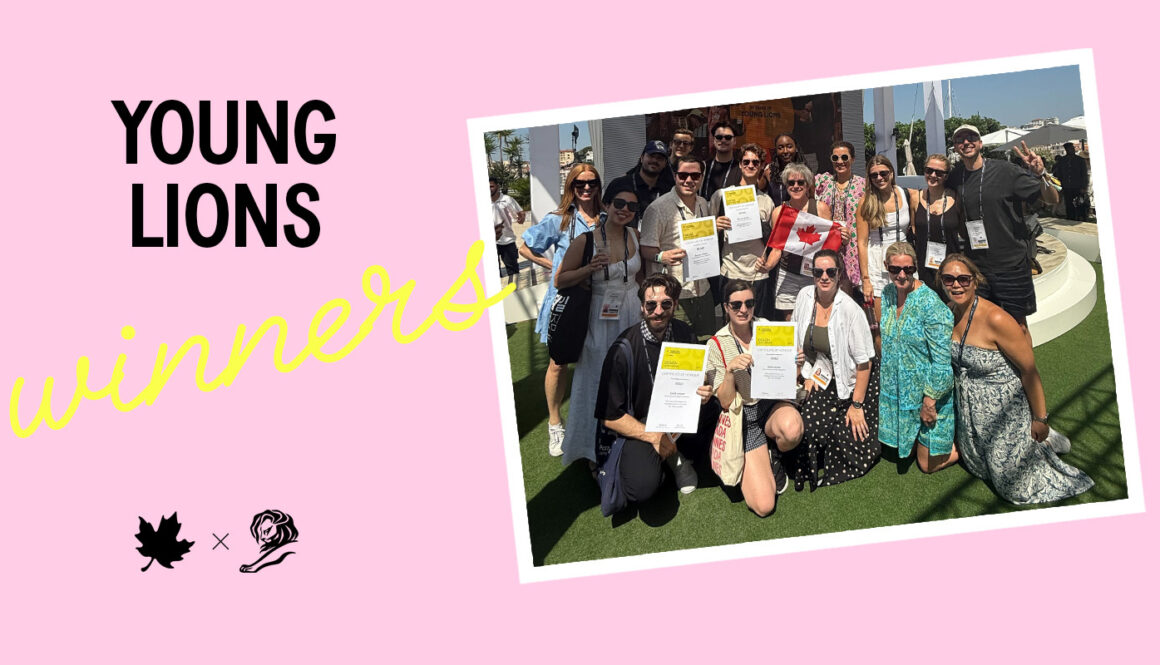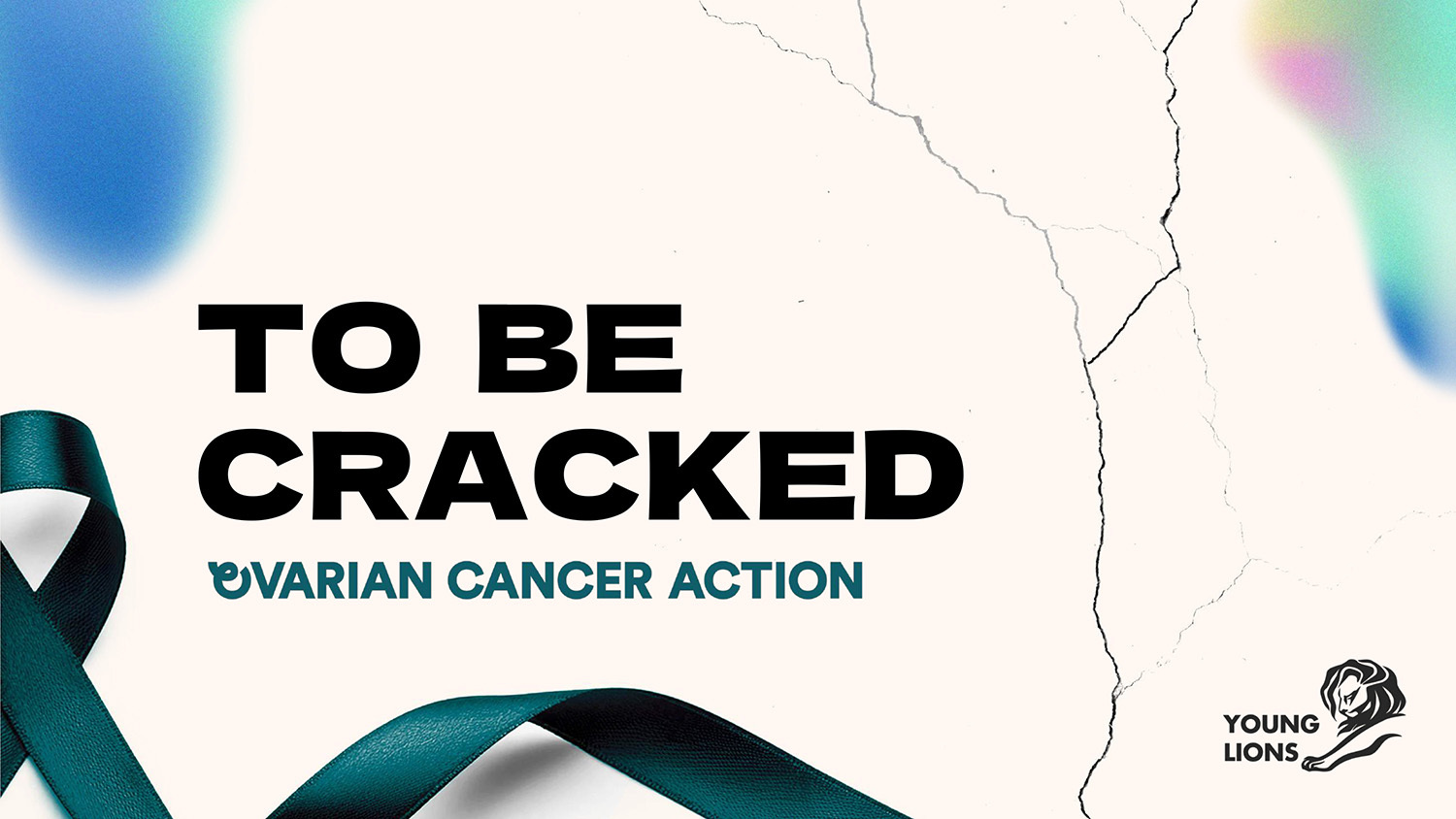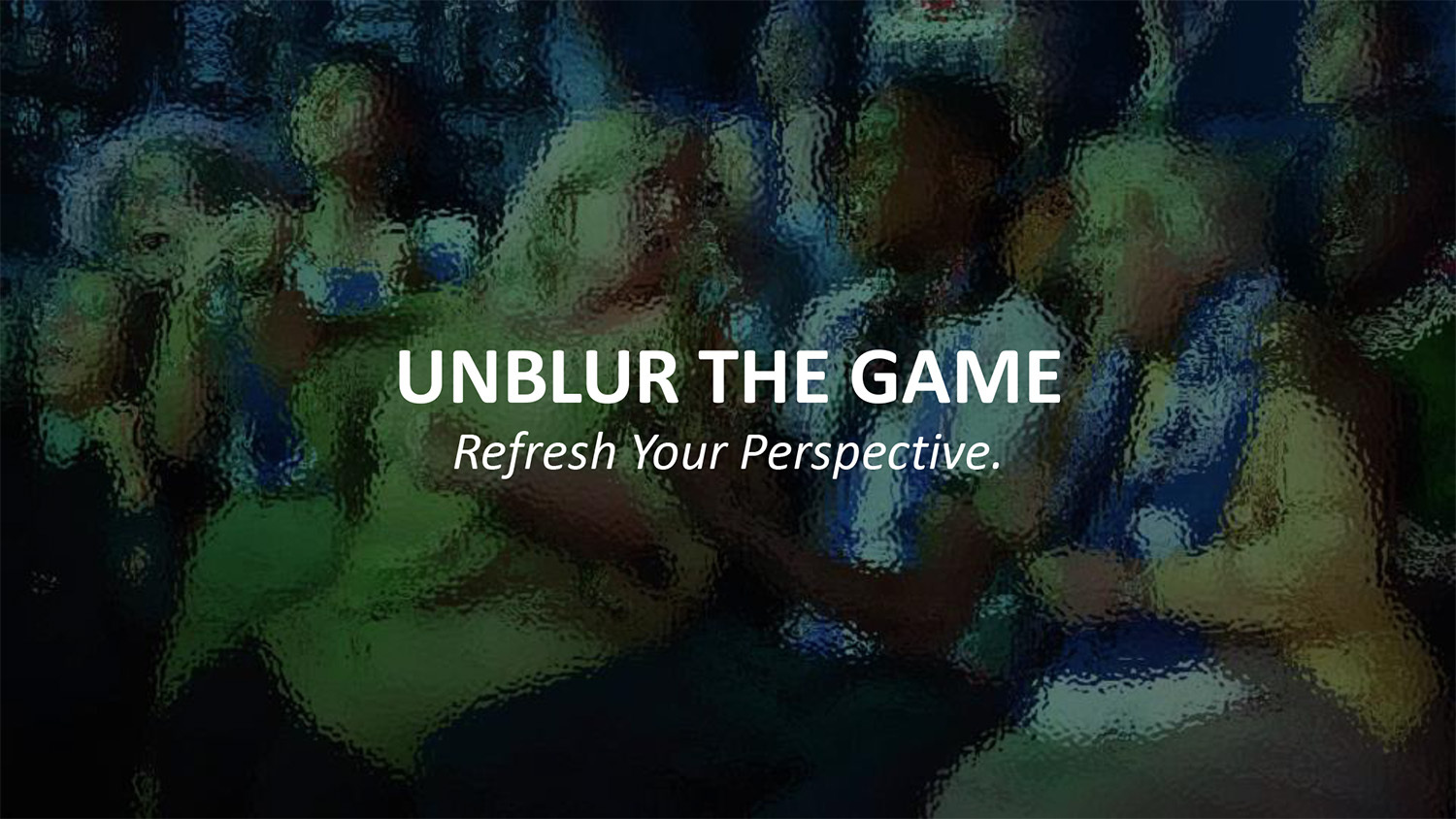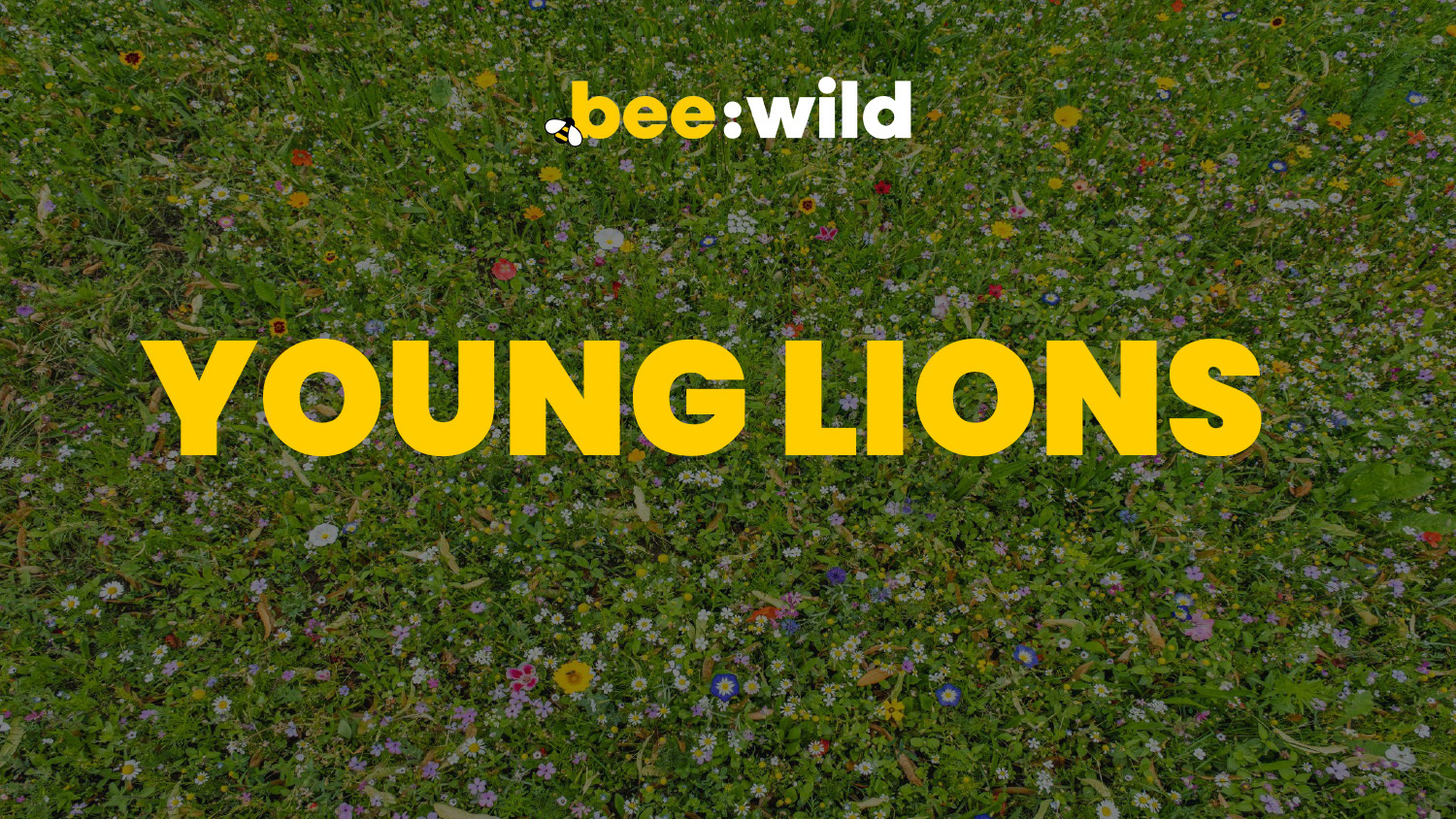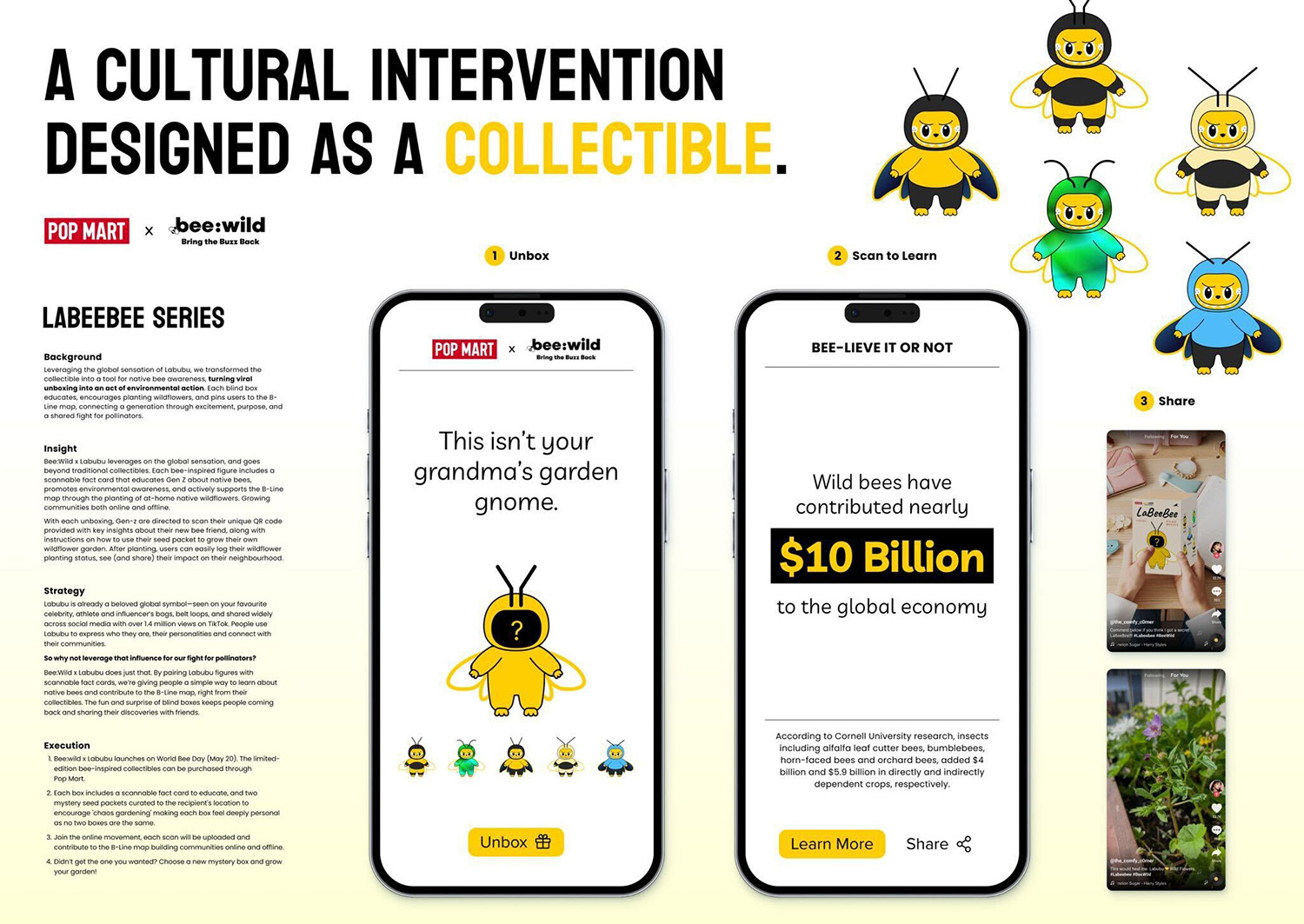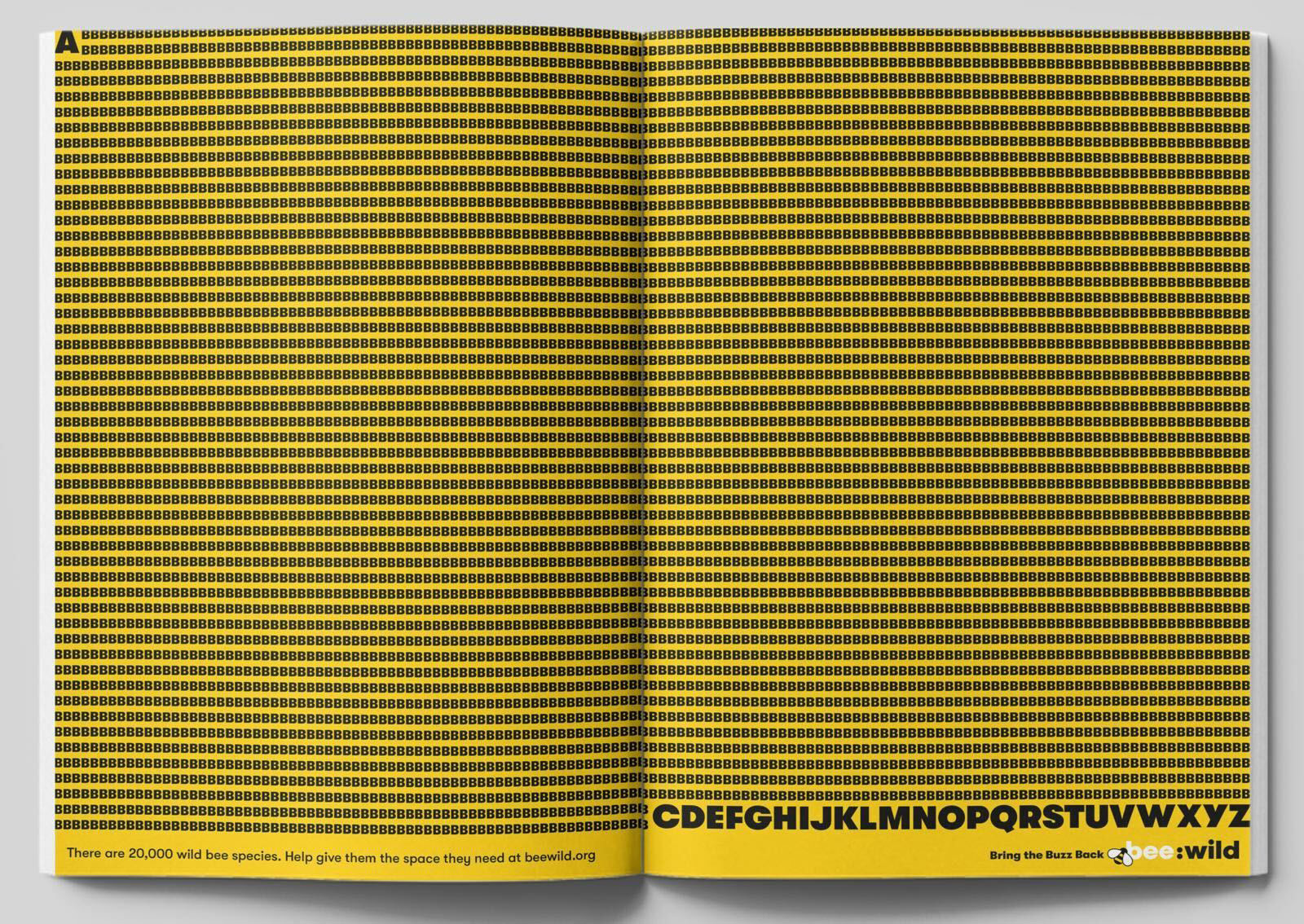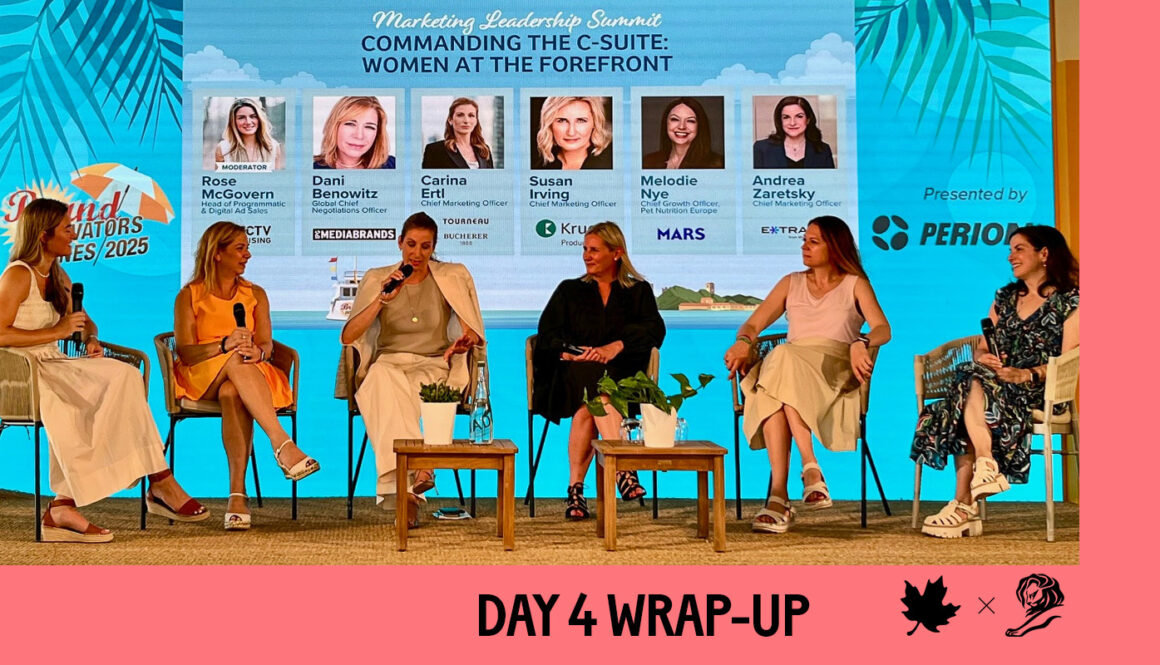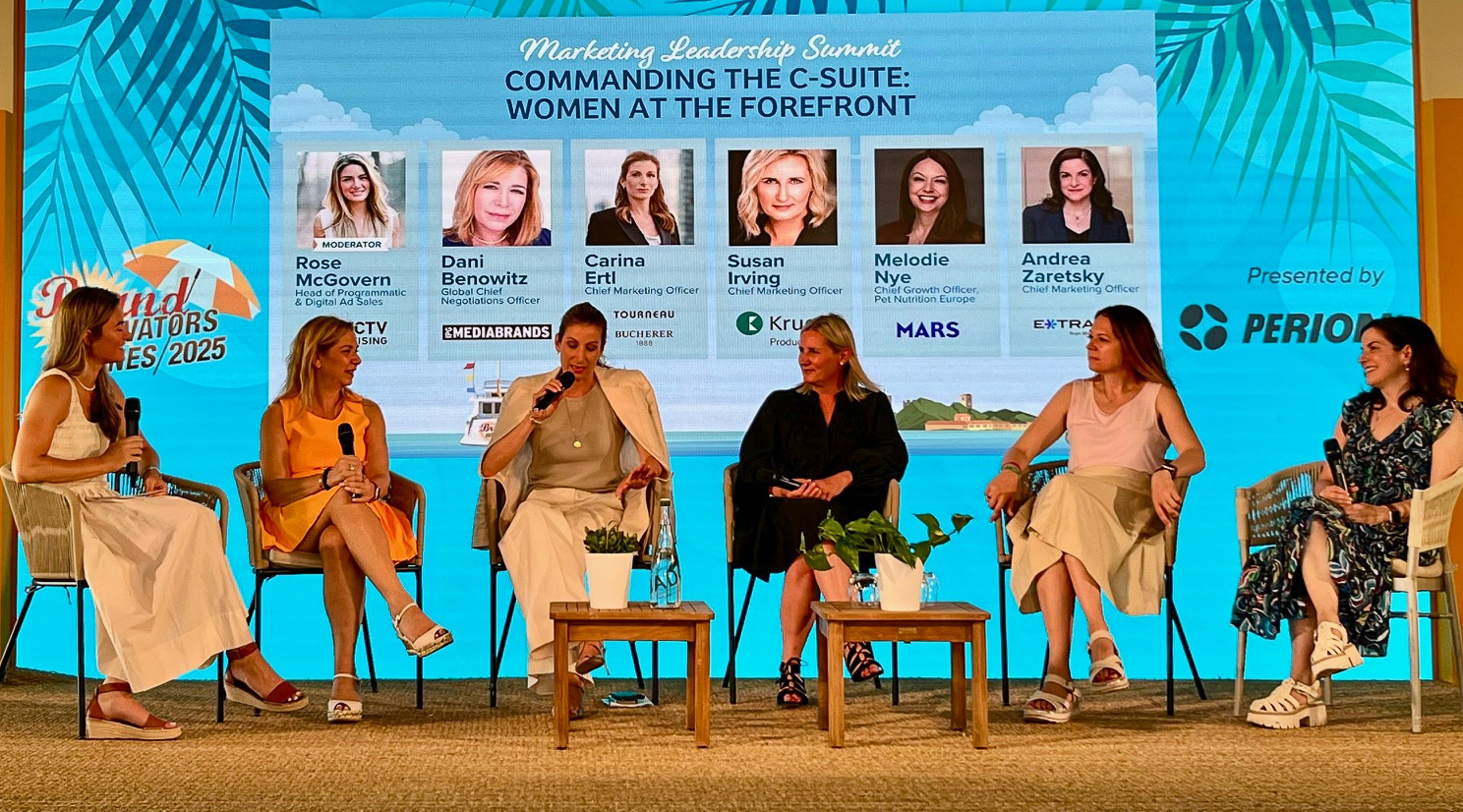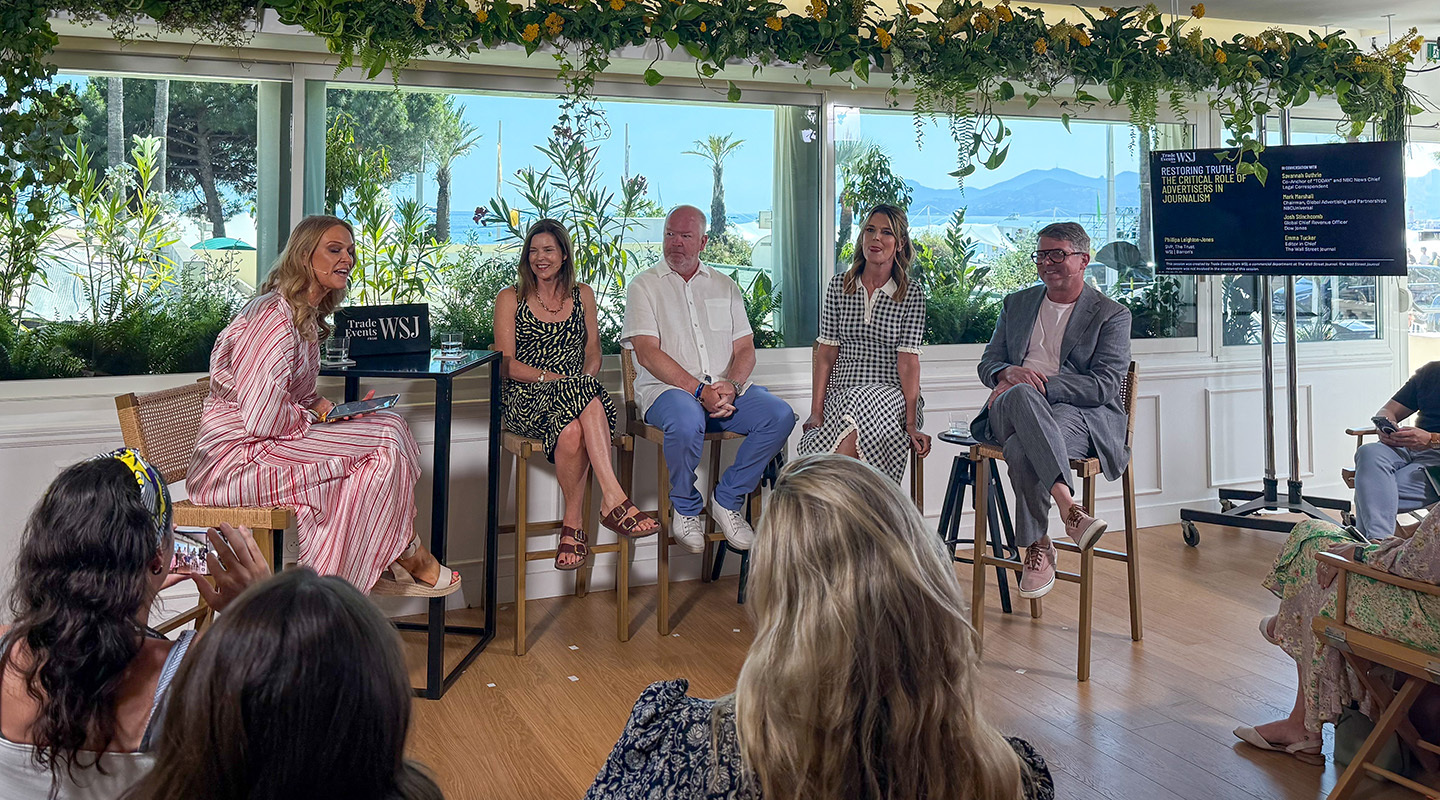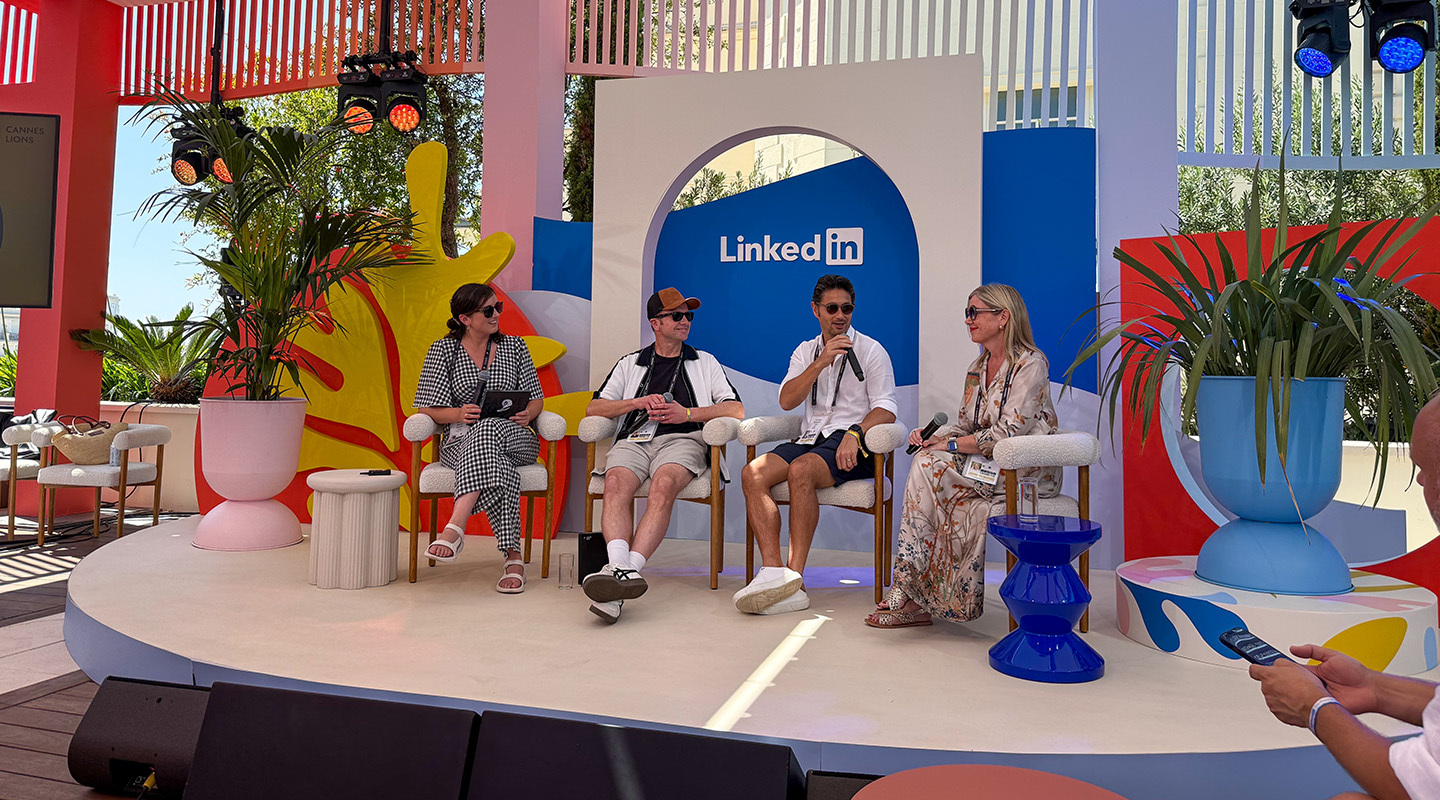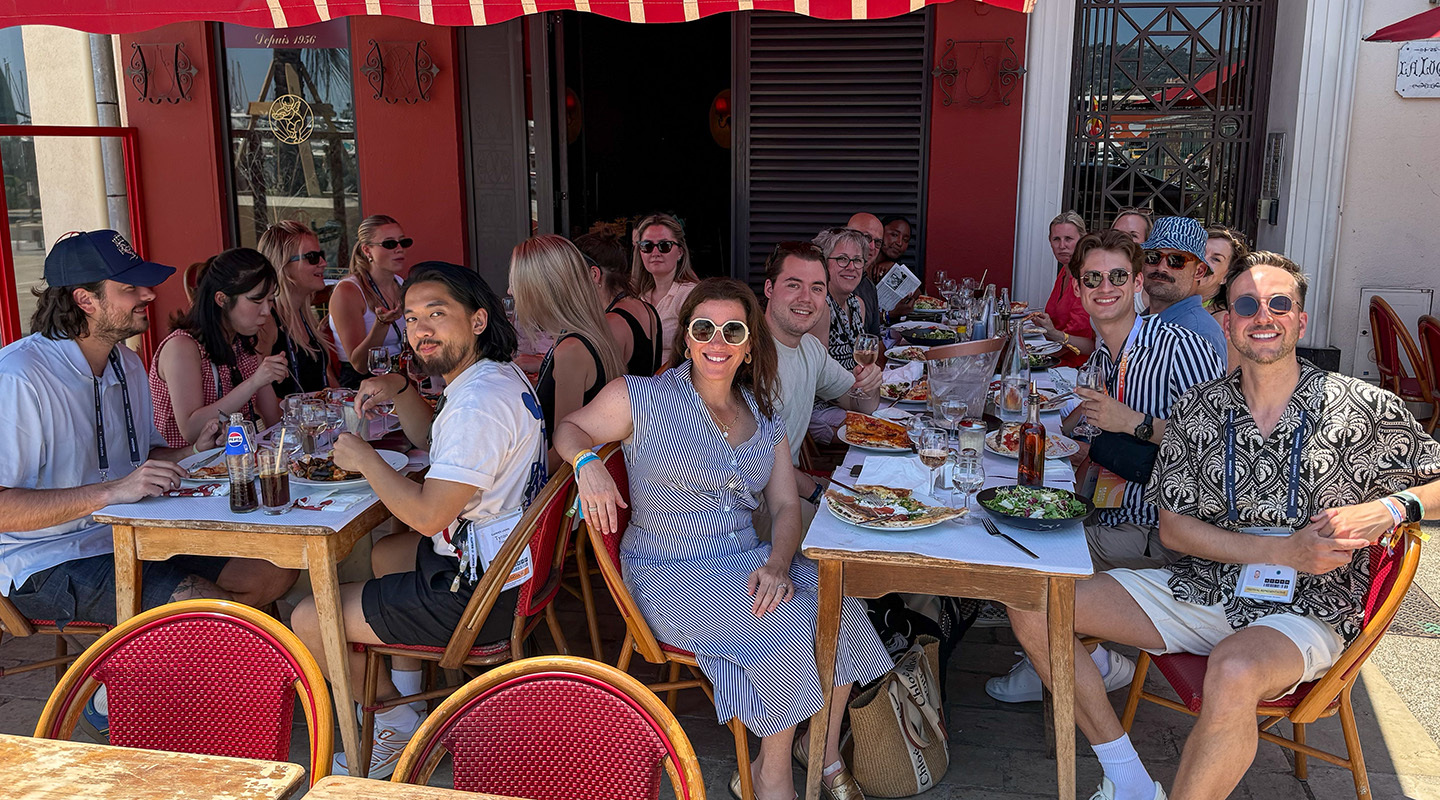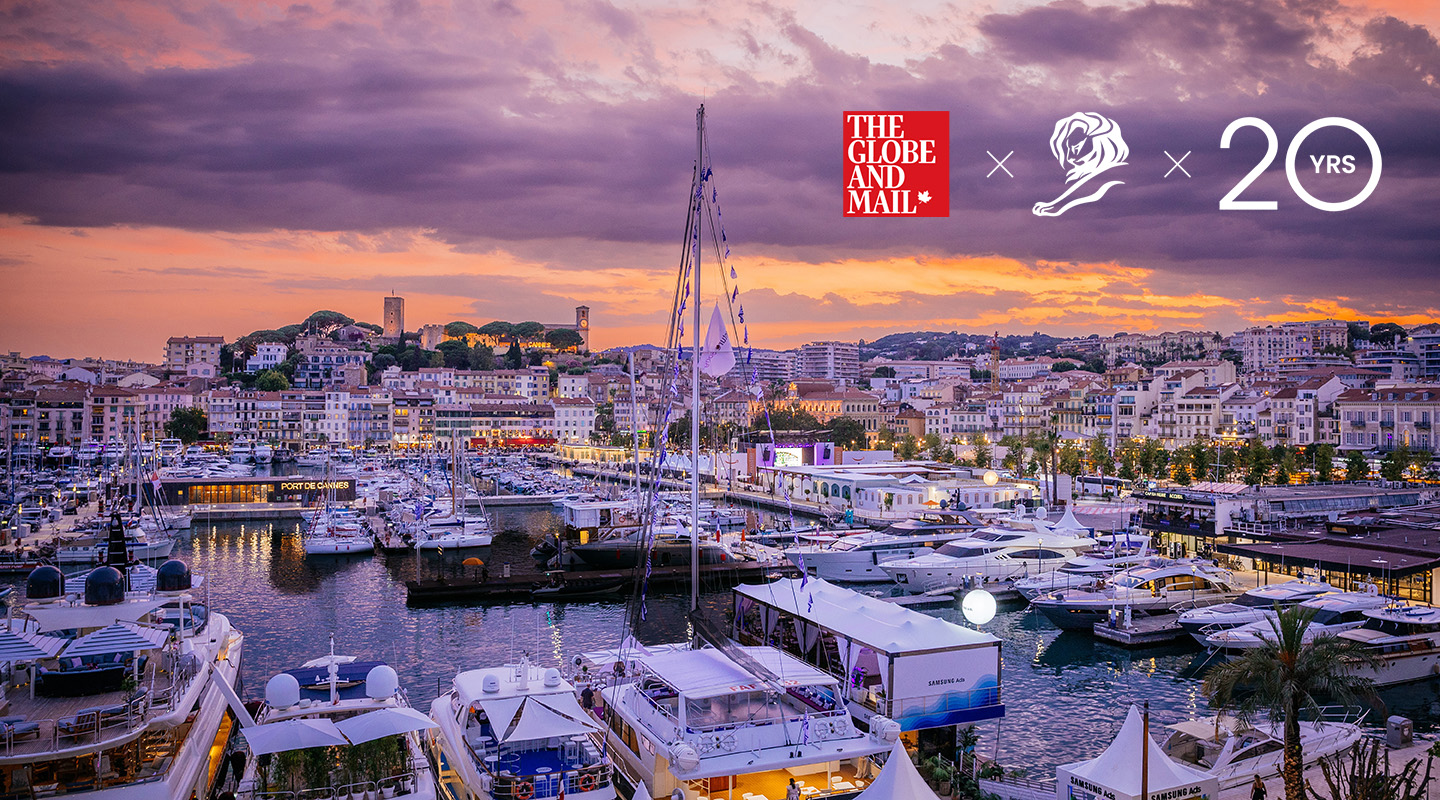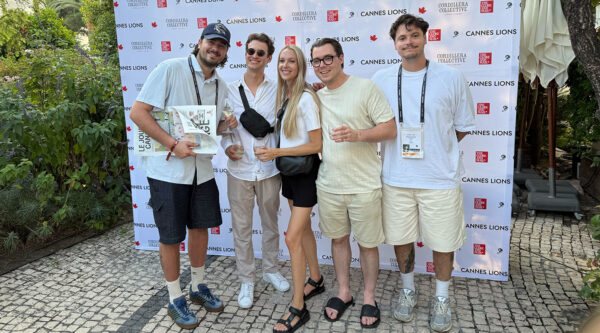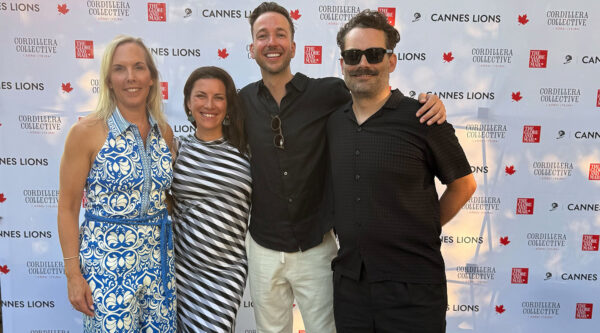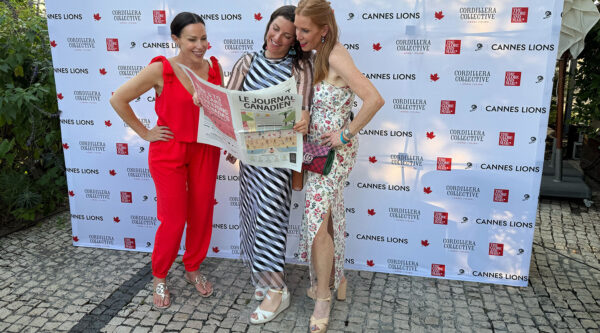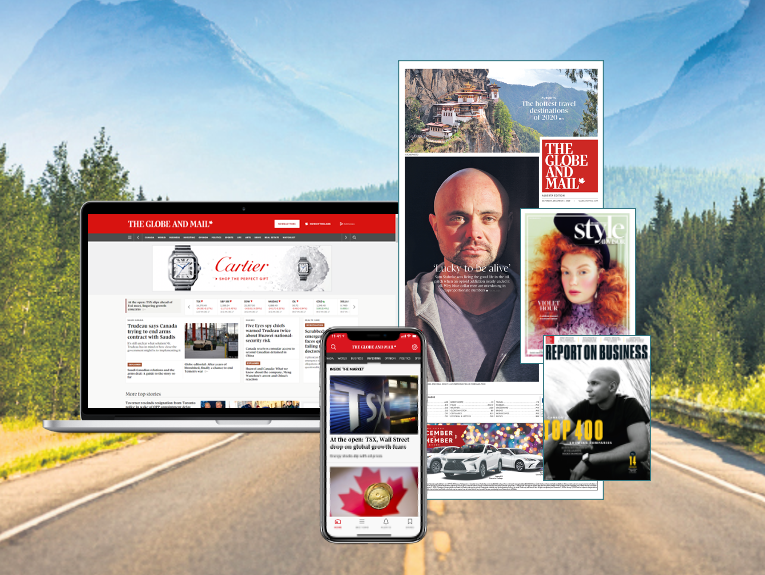Design in Motion: How Two Canadian Young Lions Captured Gold at Cannes
Winning the ultimate prize at the global Young Lions competition in Cannes, Zoë Boudreau and Jesse Shaw of Rethink brought home Gold in the Design category for their bold and compelling visual identity for the Museum of Art and Photography India – disrupting assumptions about comics and culture.
With over 450 competitors from 67 countries across seven categories, this year’s competition was among the most competitive yet.
Marcin Zerek – Head of Trade Marketing, The Globe and Mail, Canadian Cannes Lions Advisory Board Member, and Canadian Representative, Cannes Lions International Festival of Creativity – was in Cannes to cheer on Zoë and Jesse as their names were announced as Gold winners in Design. Fittingly, 2025 marked the first year Canada held a qualifying competition in the Design category, making the win all the more meaningful.
Back home in Canada, Marcin got the chance to connect with Jesse and Zoë for a Q &A after their win in Cannes.
To kick things off, could you both start by introducing yourselves?
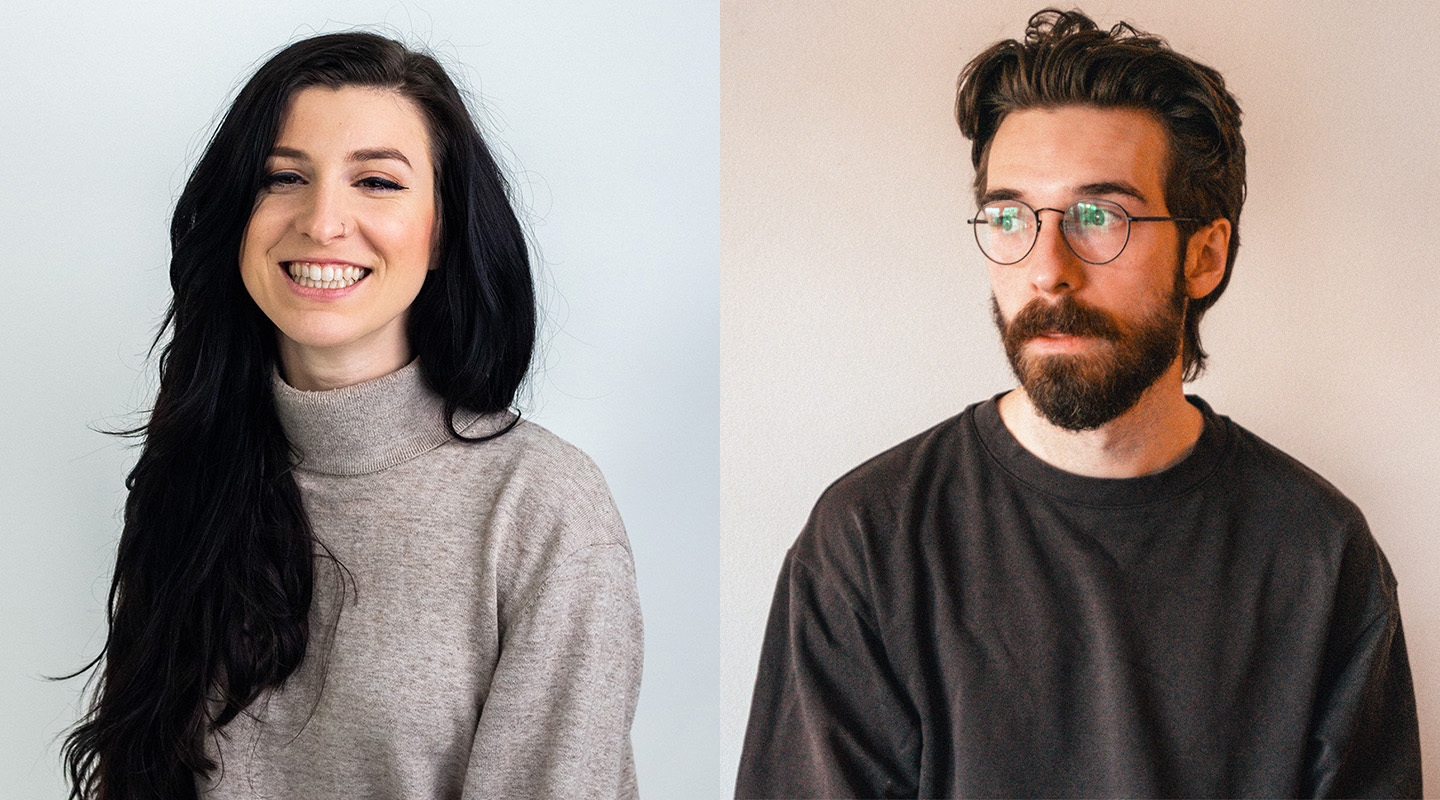
Hello! I’m Zoë, an Associate Creative Director based in Canada with 9 years experience in design and advertising. Branding is my specialty wrapped in a big bow of conceptual thinking. I truly believe that design is a secret power. People don’t fall in love with businesses, they fall in love with charismatic personalities, humour and truth. Design unlocks these traits. Logos, colours, type, illustration, and tone of voice all smooshed together form a persona that audiences befriend.
Hey, I’m Jesse. I’m a motion graphics designer currently based in Vancouver, BC. I’ve been working as a motion designer for about 10 years now, and for the last several I’ve been focused specifically on collaborating with design teams across Canada to incorporate motion into the brand identities they develop for clients.
I was beyond thrilled when your names were announced as Gold winners in the Design category– what was that moment like for you?
ZB: It was a visceral body reaction more than anything when I heard our names. Nothing I could really put into words. Probably the feeling of a full dopamine overload. I’m not sure if it really sunk in for me yet but hopefully soon!
JS: Quite honestly I think I may have startled the people sitting around me because I jumped up and cheered so loudly. There was a lot of work we’d both put in that had led to that moment, so the realization that we won was definitely surreal to say the least. We knew we were both proud of what we had made and how we had presented it, but it’s still sinking in that we’ve won such a global competition.
You’re both from B.C. but based in different cities, which meant collaborating virtually during the Canadian qualifying competition – a setup that clearly worked. In Cannes, you shifted to working side-by-side for the first time. Did that change in dynamic present any challenges?
ZB: From my perspective, it was a seamless transition. We’re used to remote work, but being side-by-side really supercharged our process, making us faster and better at splitting the workload. We still had solo brainstorm time, but our time together felt more organized – maybe thanks to our Canadian Young Lions competition and bootcamp.
JS: We went into the competition at Cannes knowing that things would be quite different from our usual work setups. Before the competition began, we laid out a game plan that we stuck to once everything got underway. Allowing time to brainstorm together while walking back to the hotel, then separating briefly to explore potential approaches, proved to be an effective way to start. When we regrouped, we felt energized and ready to dive in. Many of these strategies had been discussed at the bootcamp hosted by The Globe and Mail, so we felt prepared going in, and that did a lot to build the team’s confidence.
2025 marked the first year Canada held a qualifying competition in the Design category. How does it feel to represent Canada in such a historic moment?
ZB: It feels amazing. This win truly energizes me to push every 30-and-under designer to apply next year, so we can create a Canadian Design Gold streak.
JS: It’s incredible, and it was truly an honour to represent our country at a global competition. In my opinion, Canadian designers continue to be among the best in the world, so I am confident we will keep shining at Cannes.
Can you walk us through the creative process behind your visual identity for the Museum of Art and Photography India? What inspired your approach?
ZB: Our project, IN Frame, centers on Indian storytelling. We used the country’s “IN” shorthand to create a framing device for exhibition artwork, complemented by a speech bubble that lets the art speak for itself. Modern Indian comic books and the brief itself were major inspirations.
JS: I think our approach was shaped in large part by our initial lack of familiarity with the specific space. We were able to tackle the brief with genuine curiosity, and as we uncovered more of the medium’s history and began to appreciate its depth, that excitement naturally carried over into our design process.
IN FRAME by Zoë Boudreau and Jesse Shaw
How did you tackle the challenge of disrupting assumptions about comics and culture in your design?
ZB: Aiming to challenge the perception that comic books are only intended for children in the West, we developed an identity for the exhibition that redefines this narrative, and puts the spotlight on India’s contributions to narrative artwork. We thoroughly integrated India into every aspect of our system. We used the country’s shorthand in the name, designed a framing device to highlight exhibition work, incorporated their flag within the palette, and created layouts reminiscent of Indian comic book panels.
JS: Tackling the challenge of building a brand identity centered on a static medium, as a motion designer, offered a lot of opportunity to create something that felt both unique and authentic to the brief. Comics as an art form have so much implied movement within them, and combining that with the museum’s digital-first approach to learning presented some exciting moments to incorporate animation into the identity we were developing.
What were some of the biggest challenges you faced during the competition, and how did you overcome them?
ZB: My biggest challenge was the 4 PM competition start. While Jesse and I began fresh at 6 AM in the Canadian competition, in Cannes, we had to strategically pace ourselves in the day and avoid the sun to conserve energy.
JS: I wish it wasn’t something as basic as staying fuelled and hydrated, but there’s a uniquely physical aspect to a 24-hour competition that really can’t be overstated. Listening to your body during that time is absolutely essential
What advice or tips would you give to future Young Lions contestants considering entering the competition next year?
ZB: Choosing a partner you trust and respect is key. Having that psychological safety where you can tell your partner what’s working (or not) during a time-crunch is so so important.
JS: You absolutely need to be in lock-step with the person you’re working with on this. The timeline is such a pressure cooker that open, judgment-free communication is essential; without it, you’re setting yourself up for a difficult experience. Levity also feels important when things get tough. Being able to step back and share an honest laugh can go a long way in building a team mindset that carries you through to the podium.
You presented your design live to the global jury. What was that like? Did you get a sense that the jury thought your design was medal-worthy?
ZB: We only had one evening to write and practice our script, which felt much harder than the Canadian competition’s presentation. We were initially worried the judges wouldn’t see our robust motion system since only one static slide was allowed. So, we slapped the biggest QR code ever into the corner of the page. Luckily, the judges already had our motion system on their iPads as we walked into the judging room and they were incredibly enthusiastic and smiley. Despite still wondering how our work compared to others after the prez, I left feeling we gave absolutely everything we had.
JS: From our time at the bootcamp in Canada, where we received feedback from the judges, we both knew that one of our key strengths as a team was our ability to present our work effectively. Being able to clearly explain the rationale behind a design decision is crucial, so we stuck to what we knew. I’m incredibly grateful that the judges understood what we were aiming for in our design approach. They were all so kind and thoughtful in their questions after we presented, so I knew we had at least sparked some genuine interest.
You won Gold in Canada and Gold at Cannes – the world’s largest gathering of creative talent. What lessons or insights from your journey would you say to inspire other designers to step into the Young Lions arena? Why is it an opportunity not to miss?
ZB: There really is no downside to participating. This was my third year doing the national competition and every year I felt like I learned something that equipped me for the next year.
JS: Just go for it. Even if you aren’t a graphic designer, there is value in how you approach design thinking, and Young Lions really creates a space where you can push yourself. At the end of the day, if you can create something you’re proud of, I’d consider that a win.
How do you see this win influencing your future work and career in design?
ZB: The exposure is incredible. I’ve never received so many LinkedIn connections from around the world. These connections excite me because as we roll out new projects we’re able to showcase to the world what Canadian design is all about.
JS: It’s done a lot to shape my career trajectory. For a long time as a motion designer, I assumed my role would be primarily production-oriented, but this entire experience has made me recognize my own ability and inspired me to advocate for my approach to design and creativity. It’s pushed me to put myself out there, to stand up in front of people and share why I care so deeply about design and motion; and hopefully inspire a few others to get interested as well.
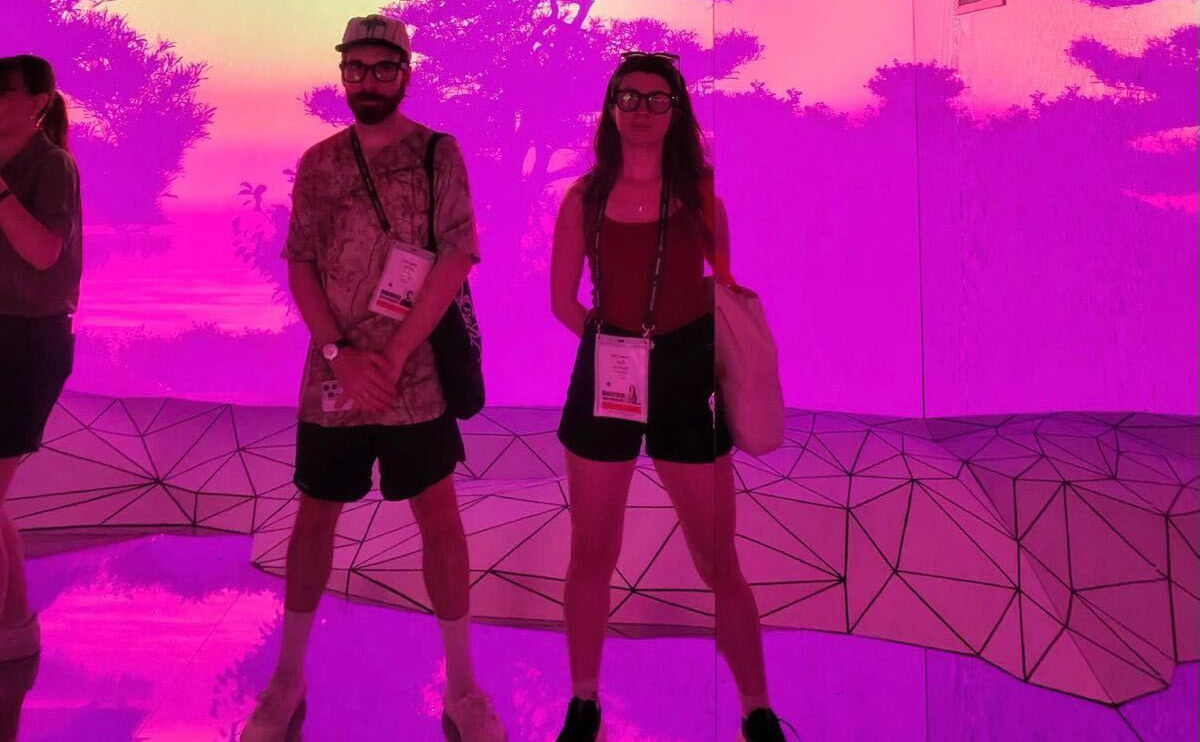
One of the first calls came from CMA President Alison Simpson, who invited Zoë and Jesse to join the CMA Connect Podcast to talk about their Gold-winning design. Hear how a brief far outside their comfort zone sparked bold ideas – like integrated speech bubbles and motion systems – and how they turned pressure into creative gold. Listen here.

Marcin Zerek, Head Trade Marketing, The Globe and Mail
Dedicated to fostering creativity and innovation in the marketing industry, Marcin leads the representation of the Cannes Lions International Festival of Creativity in Canada, driving strategic initiatives that support the growth and recognition of Canadian talent and creativity. With a strong blend of strategic vision, creative expertise, and a passion for driving positive change, he continues to make significant contributions to the marketing landscape, both within The Globe and beyond.
IG: @GlobeMediaGroup
X: @CannesLionsCAN
Hashtag: #CannesLions2025
LinkedIn: www.linkedin.com/company/globemediagroup


